In the first few days of our stay in Crete, we all had a habit of taking it easy in the mornings, so we would start our sightseeing a bit later. However, there came a day when we all agreed to start a bit earlier as we had an ambitious plan for our visits.
Although I was with a group of ornithologists and bird enthusiasts on Crete this time, we first stopped at the famous Monastery of St. George in the Selinari Gorge, often called Selinari Monastery. Not only is the monastery located right next to the main road, but it was also the day between Good Friday and Easter, so it made sense to stop here for those who wished to light a candle. More about this monastery can be found in my travel stories from Crete of 2022 (see: https://www.svudapodji.com/en/crete-23/).
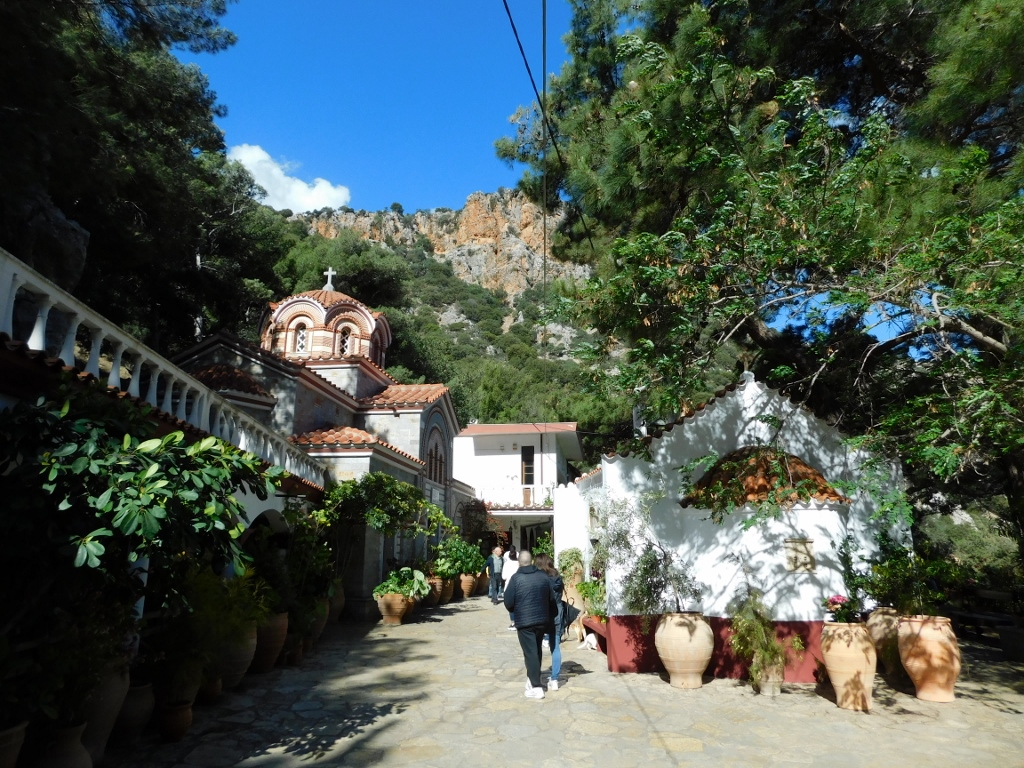 Monastery of St. George Selinari
Monastery of St. George Selinari
However, the Selinari Gorge is also a good spot for watching birds. For example, griffon vultures.
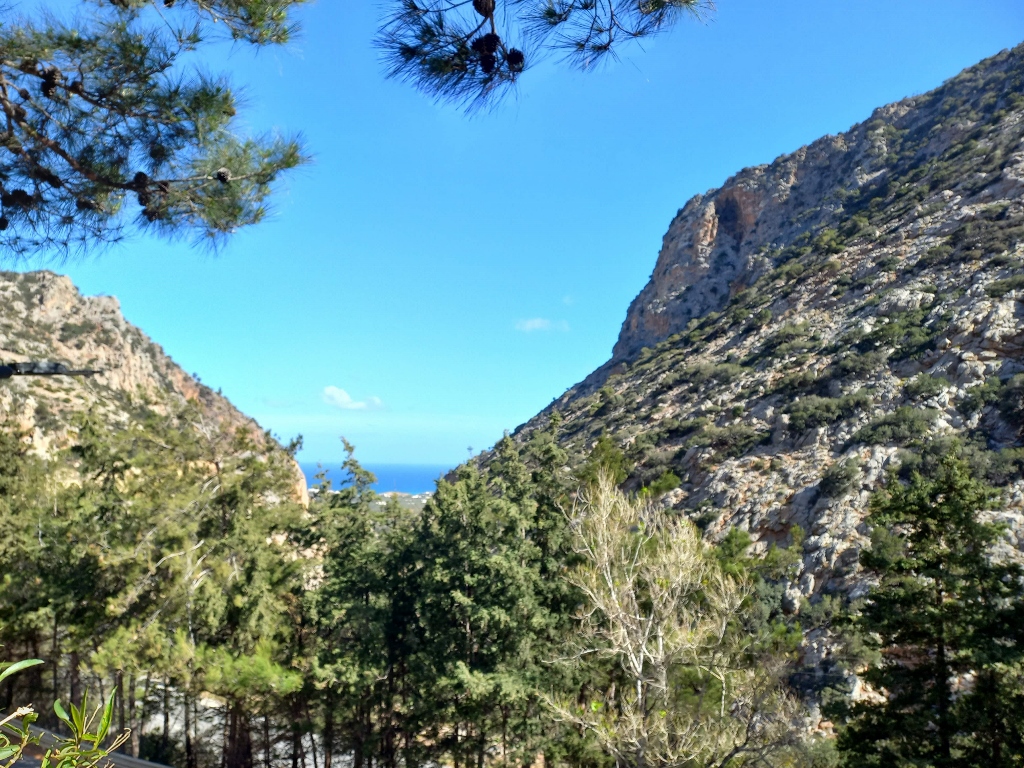 Selinari Gorge
Selinari Gorge
We didn’t have to wait long before griffon vultures (Gyps fulvus) appeared in the sky. Of course, Vuk, who was in charge the bird count, spotted other species as well, but I was satisfied just with the vultures.
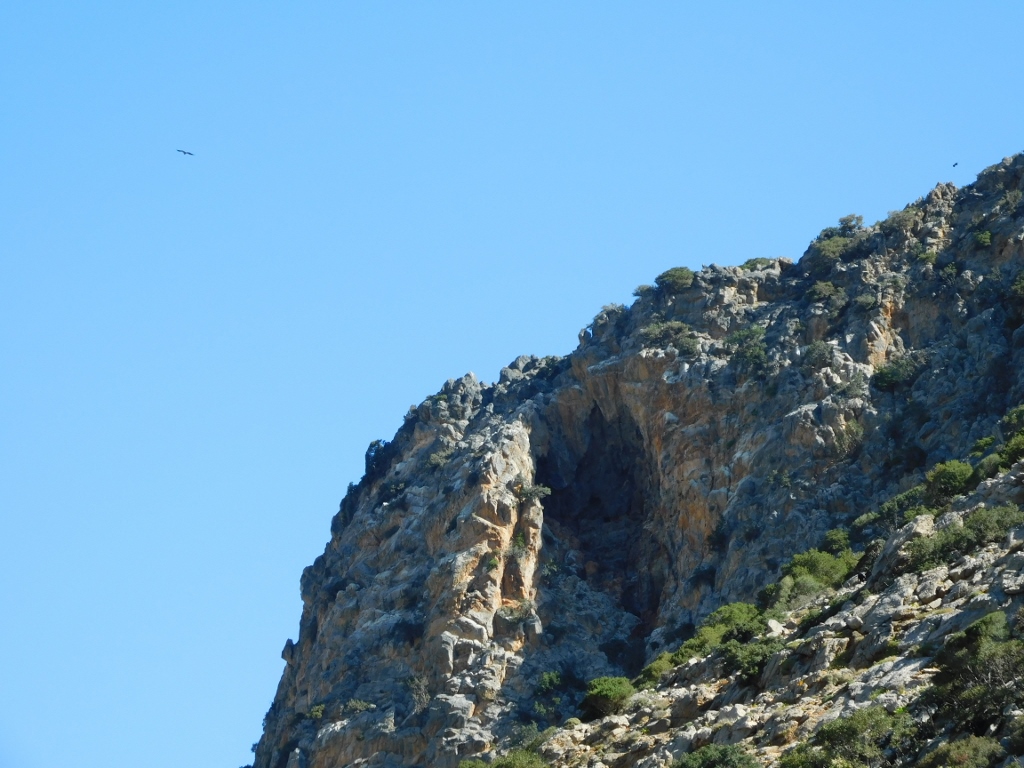 Griffon vulture in the Selinari Gorge
Griffon vulture in the Selinari Gorge
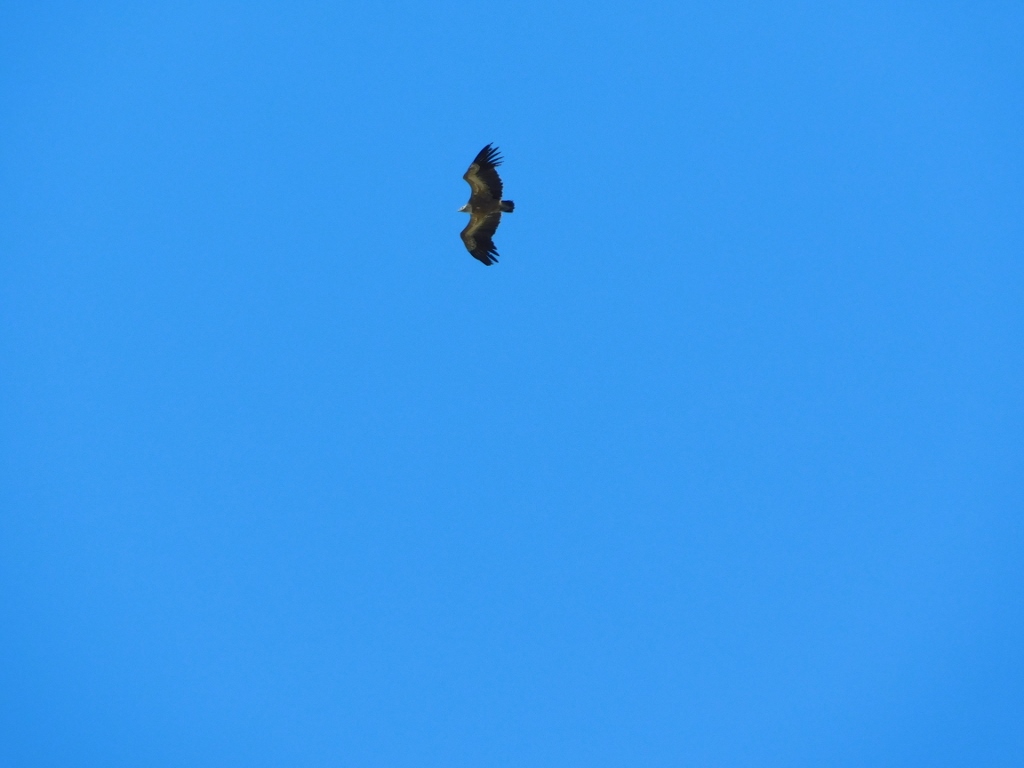 Griffon vulture in the Selinari Gorge
Griffon vulture in the Selinari Gorge
However, we didn’t linger here for long; instead, we continued further east. At one point, the main road passes right by a widened area where, at least in theory, one can enter the Tsigouni gorge. We all stopped there to search for interesting birds in the sky. Saša was the main person for this task.
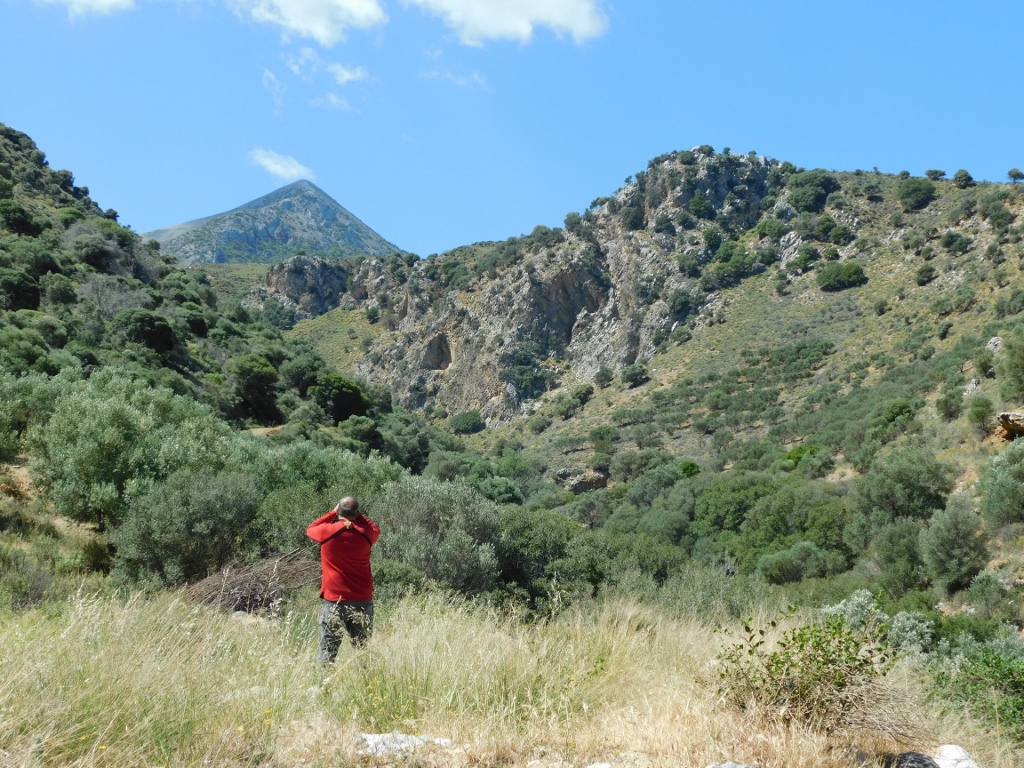 Saša searching for birds in the sky with his binoculars in the Tsigouni Gorge
Saša searching for birds in the sky with his binoculars in the Tsigouni Gorge
Not much time passed here either before the keen-eyed bird enthusiasts spotted various birds, including, of course, griffon vultures and then explained to the rest us where they were. After that, it was relatively easy.
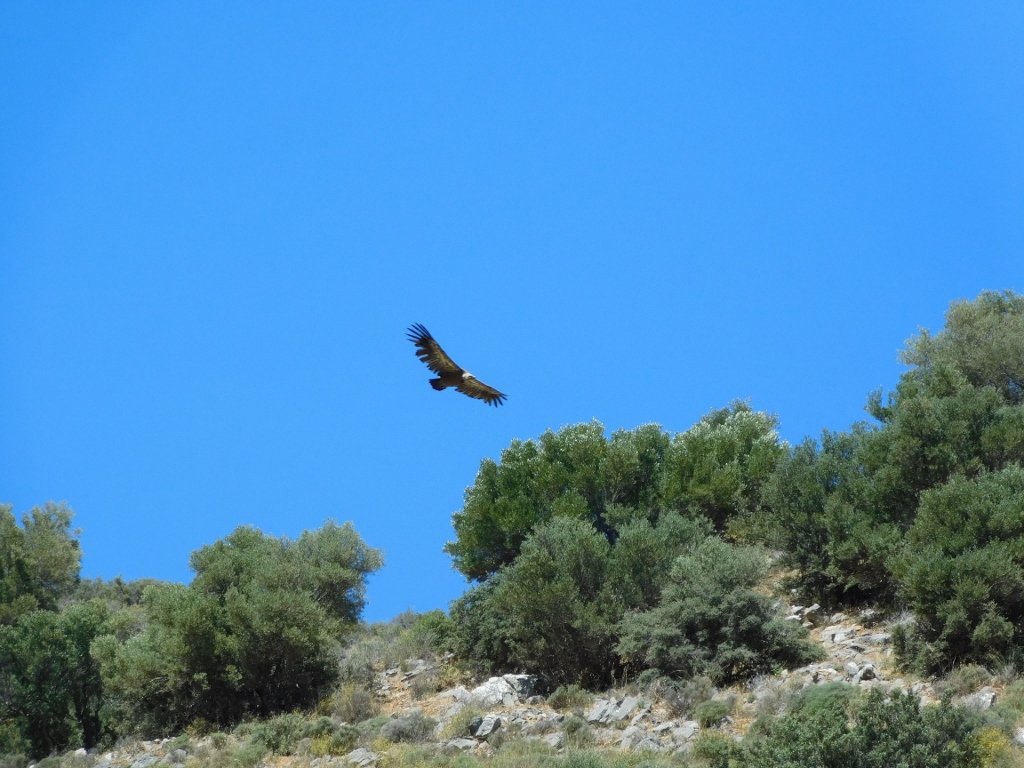 Griffon vulture in the Tsigouni Gorge
Griffon vulture in the Tsigouni Gorge
It might seem unusual to some why we constantly watched and paid attention to griffon vultures. Well, the group of the bird enthusiasts I was in Crete with is affiliated with the Birds of Prey Protection Foundation, of which I am also a member (http://vulture.org.rs/). Moreover, Saša Marinković, PhD, is the founder of the foundation, which has been exceptionally successful for 30 years now. How I met Sale (nickname of Saša) and how my interest in birds arose and developed can be found in a small series of texts starting with: https://www.svudapodji.com/en/birds-1/.
Be as it may, here at the entrance to the Tsigouni Gorge, we all observed griffon vultures and enjoyed their flight.
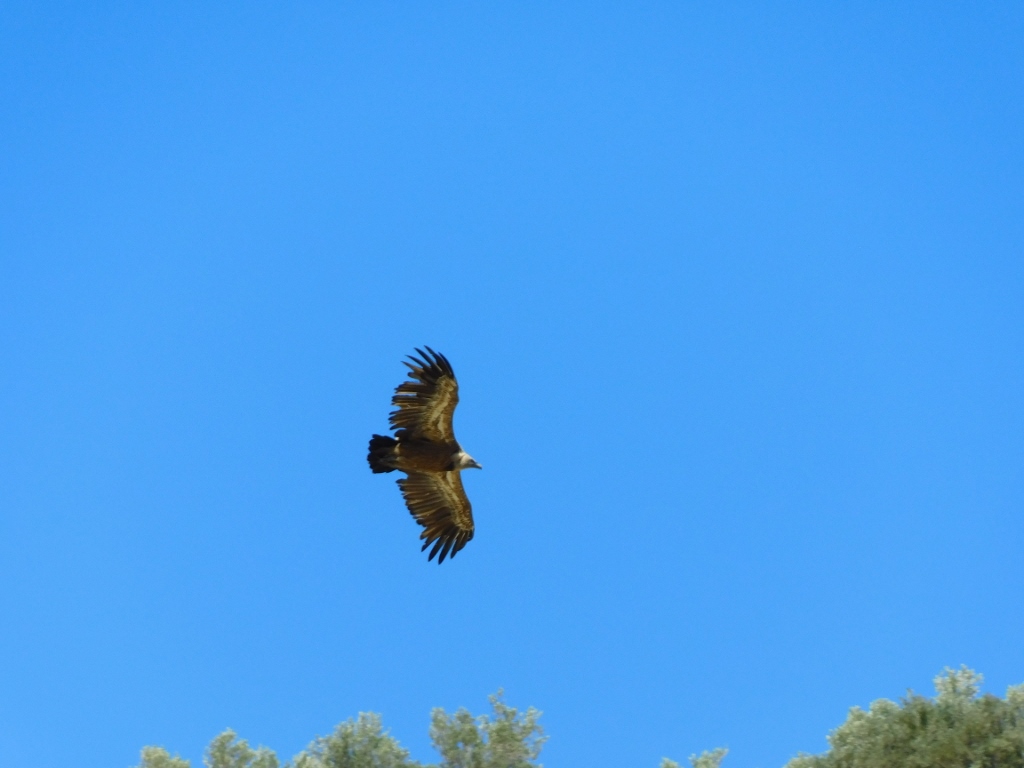 Griffon vulture in the Tsigouni Gorge
Griffon vulture in the Tsigouni Gorge
However, from time to time, I had to lower my head and camera to give my neck and arms a little rest and then I observed the surroundings of the place where I was standing. That’s when I noticed an interesting plant. It is called the squirting cucumber (Ecballium elaterium) and for centuries it used to be used in folk medicine, but has started to be considered a poisonous plant since the 21st century.
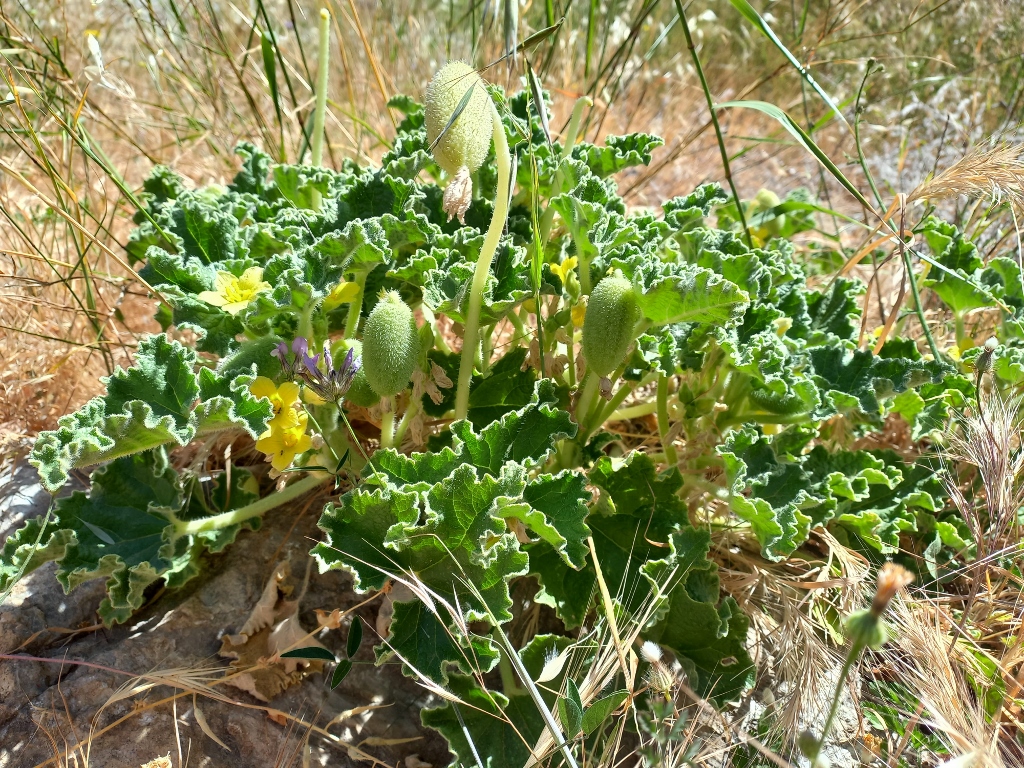 Squirting cucumber
Squirting cucumber
After a while, a few of us started to follow a wide path that enters the gorge, but we didn’t go very far because it turned out that a wire fence had been placed at one point, preventing further passage. The same situation was on the other side of the gorge.
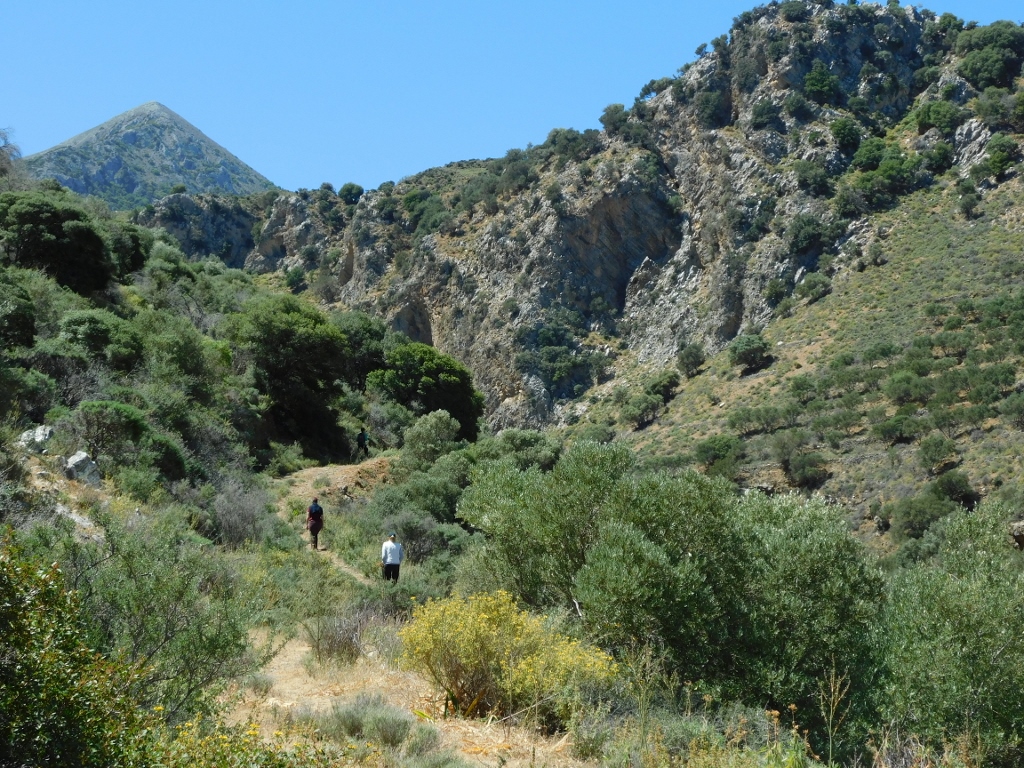 Tsigouni Gorge
Tsigouni Gorge
However, our attempt to enter the gorge was not in vain. Along the way, we noticed a shepherds’ shelter enclosed by stones. To be more accurate, we all concluded that it must be a place where shepherds and their flocks take shelter if a storm comes.
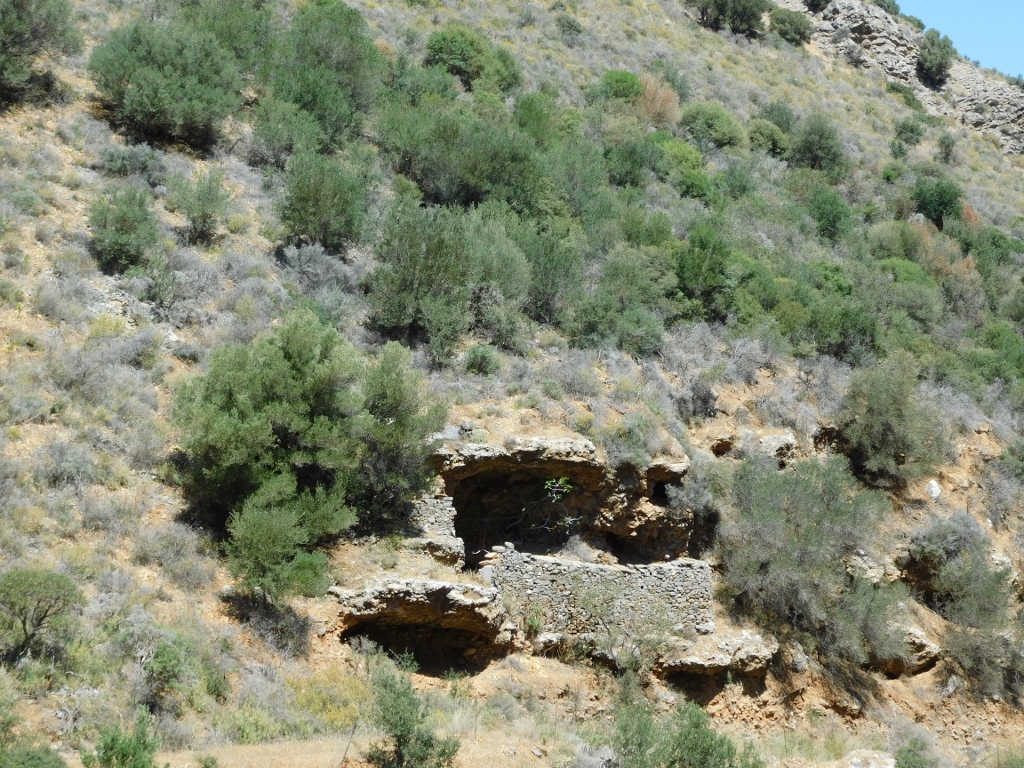 Tsigouni Gorge, a detail
Tsigouni Gorge, a detail
We also could observe from a closer distance an olive grove growing on a very steep slope, but it was secured by a series of stone terraces. The formation of this olive grove must have been an extremely demanding and laborious task.
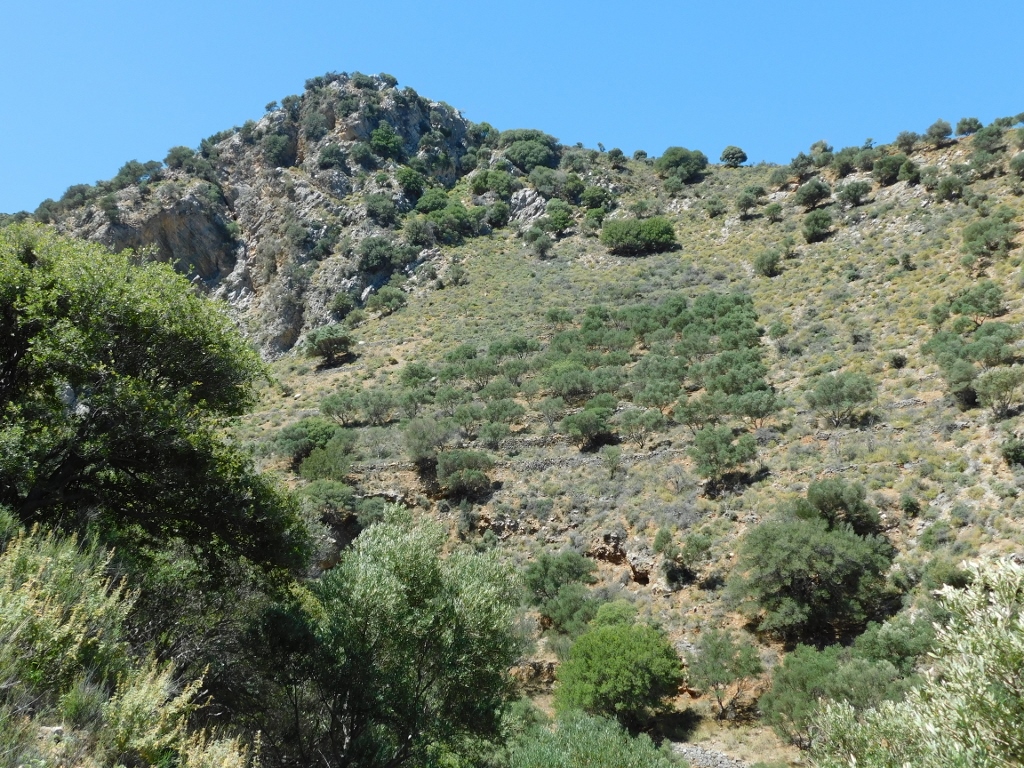 Tsigouni Gorge, a detail
Tsigouni Gorge, a detail
Then we all got into the cars and continued on until we reached the north-eastern tip of Crete, where we first passed through the Palm Forest Vai in order to reach the beach of the same name.
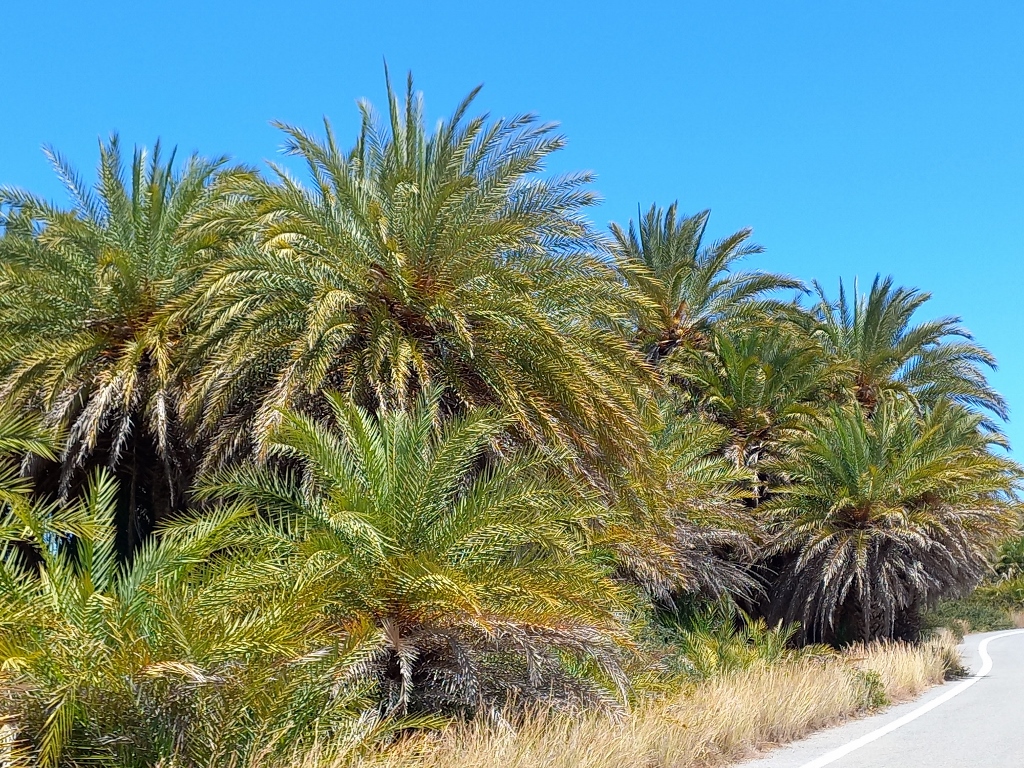 Road leading through the Palm Forest Vai
Road leading through the Palm Forest Vai
First, let me say something about the forest. It is the largest natural palm forest in Europe, covering an area of over 100 hectares and consisting of about 5000 specimens of the Cretan date palm (Phoenix theophrasti). The forest is even more impressive when you climb to the lookout point next to Vai Beach.
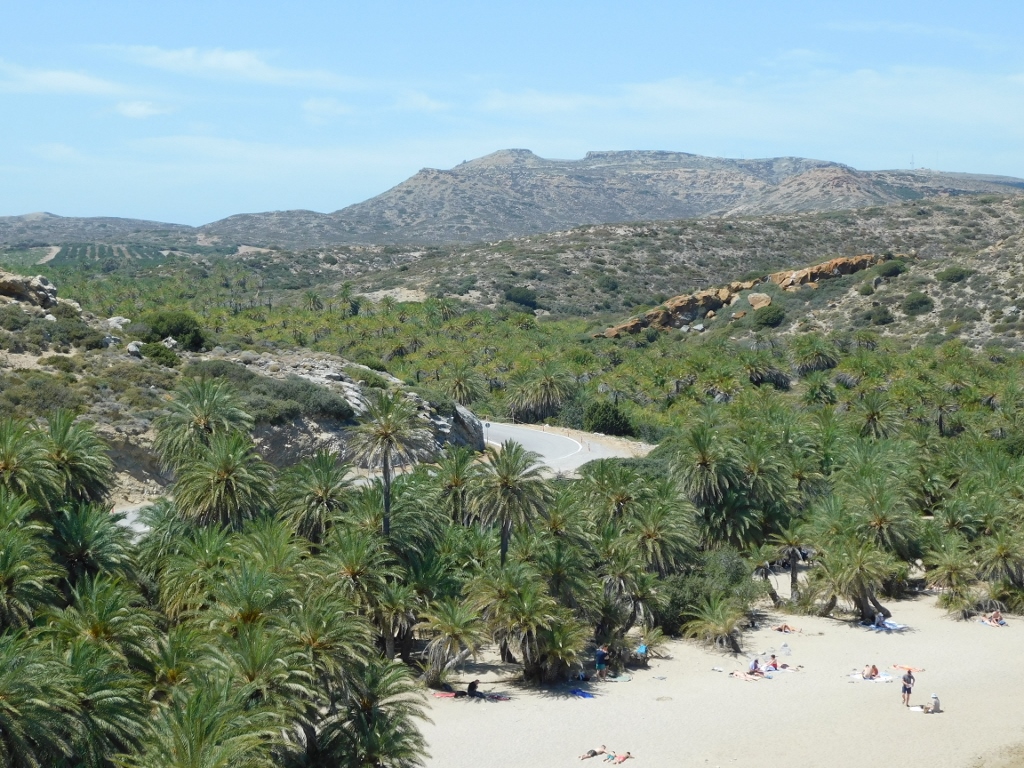 Palm Forest Vai and a part of the namesake beach
Palm Forest Vai and a part of the namesake beach
As for the beach, it was just as beautiful as it was two years earlier when I first visited. The water was still as cold as before for my taste and the only difference was that in early May, the season didn't start yet, so parking was free and there were no sun-loungers on the beach.
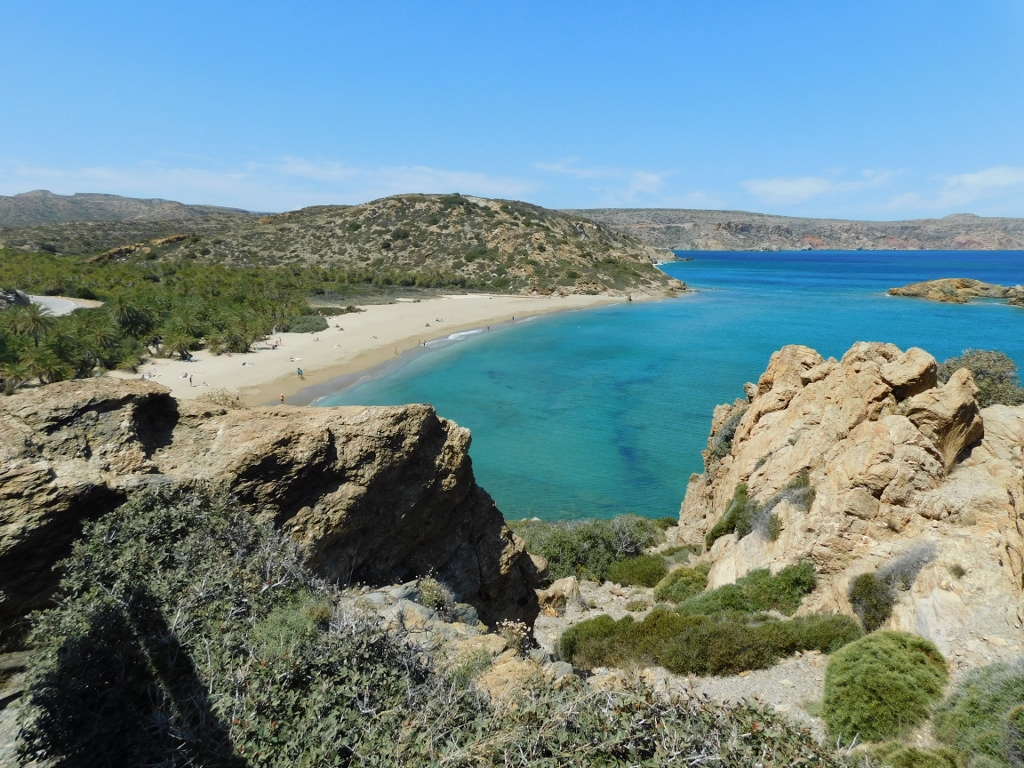 Vai beach
Vai beach
In addition to being an excellent spot to fully appreciate both the palm forest and Vai Beach, the lookout also offers a clear view of the specific geological formations that characterise this place.
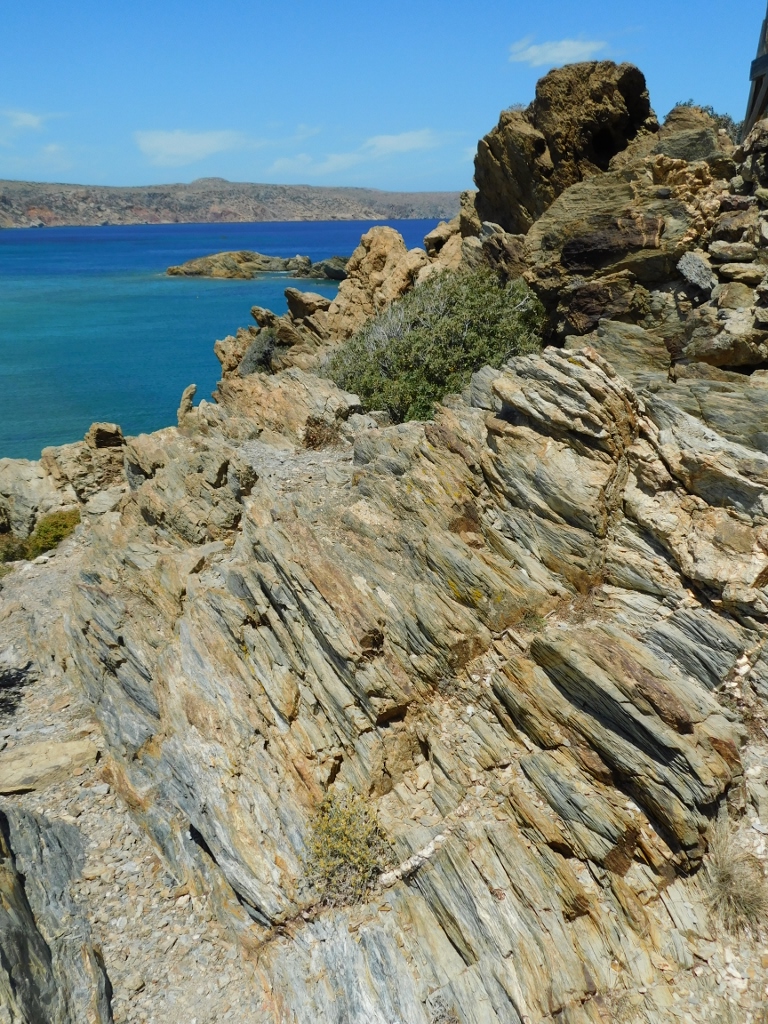 Geology of the viewpoint above the Vai beach
Geology of the viewpoint above the Vai beach
One particular feature that stands out is a fold in the rock formation that stands vertically.
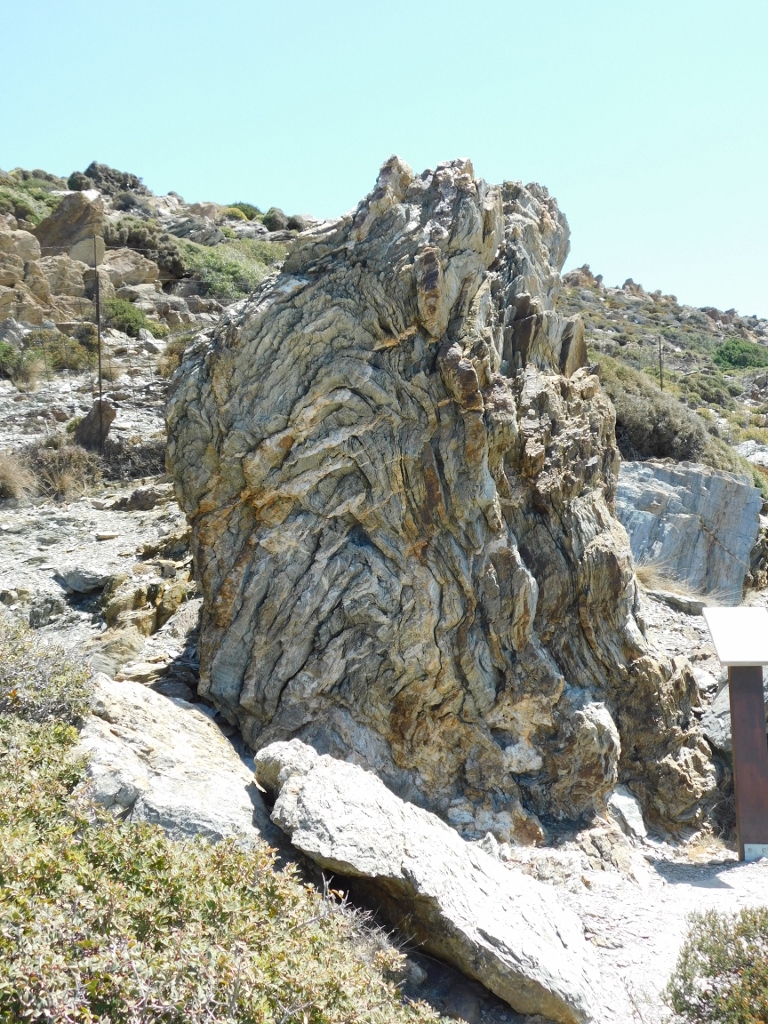 Geology of the viewpoint above the Vai beach
Geology of the viewpoint above the Vai beach
After taking photos at the viewpoint with Sonja and Beba, we returned to the beach level. Sonja and I first took a stroll and took some more photos, for instance, near a cluster of palm trees growing right next to the beach.
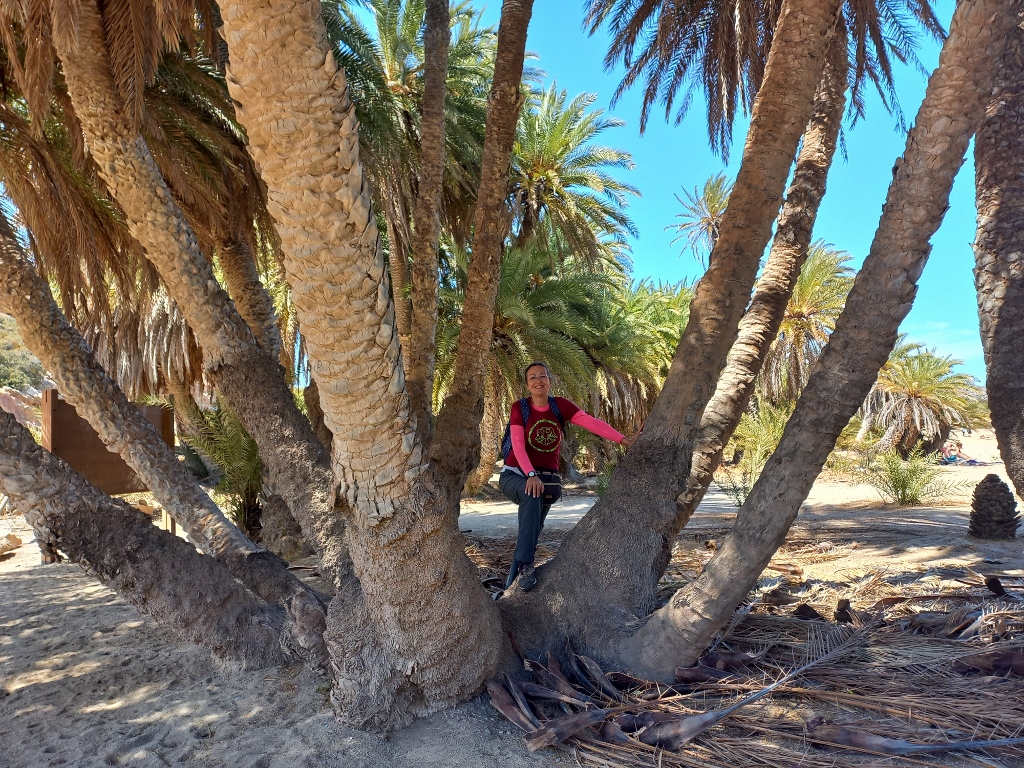 Palms at the Vai beach
Palms at the Vai beach
Then we joined the rest of the group who were sitting in the restaurant and when we all went for a walk together to look for local birds, I took advantage of a convenient spot to set up the camera so that we could take a picture together by those beautiful palm trees.
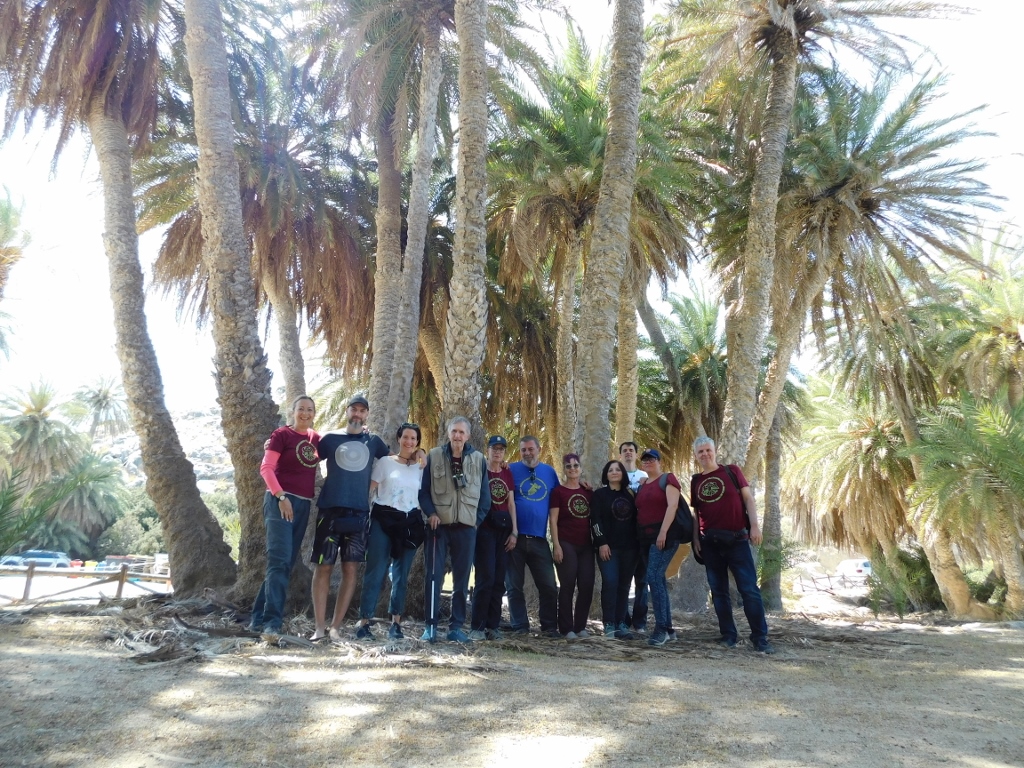 From left to right: me, Marko, Irena, Slobodan, Ljilja, Saša, Jelena, Sonja, Vuk, Beba and Oliver
From left to right: me, Marko, Irena, Slobodan, Ljilja, Saša, Jelena, Sonja, Vuk, Beba and Oliver
Between the palm forest and the beach, there was a small pond in one area, but you can’t just walk around here as you please.
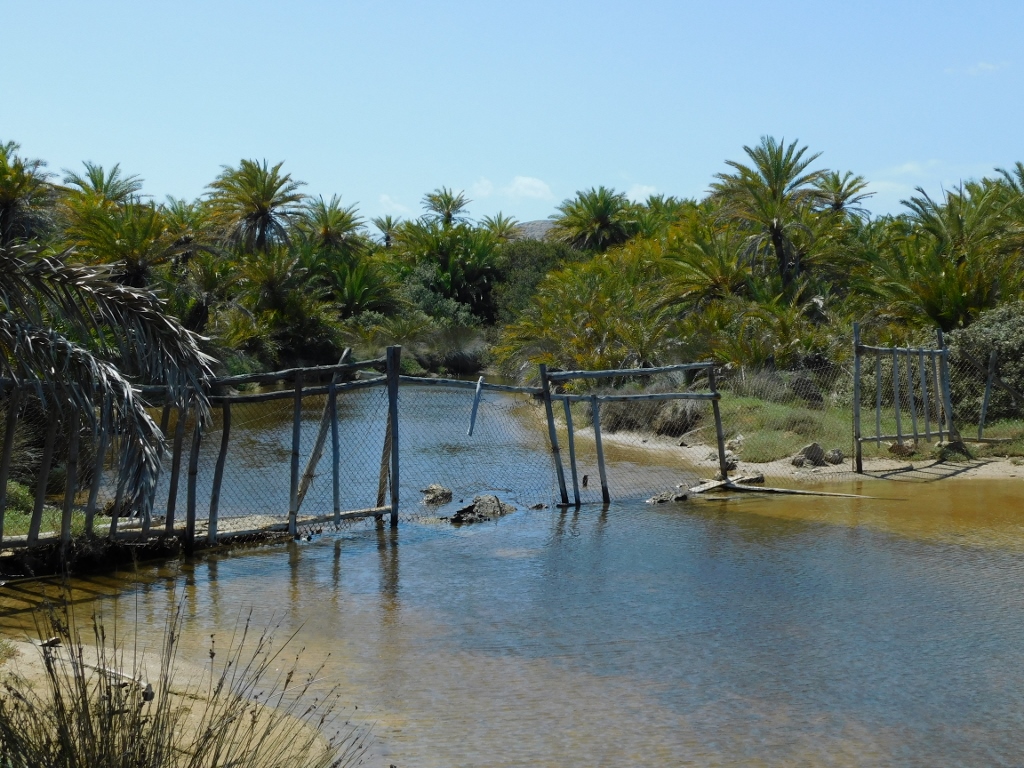 Part between the Vai Palm Forest and the beach
Part between the Vai Palm Forest and the beach
Right away, we noticed a common ringed plover (Charadrius hiaticula) there. It was a young bird, as indicated by its dark bill.
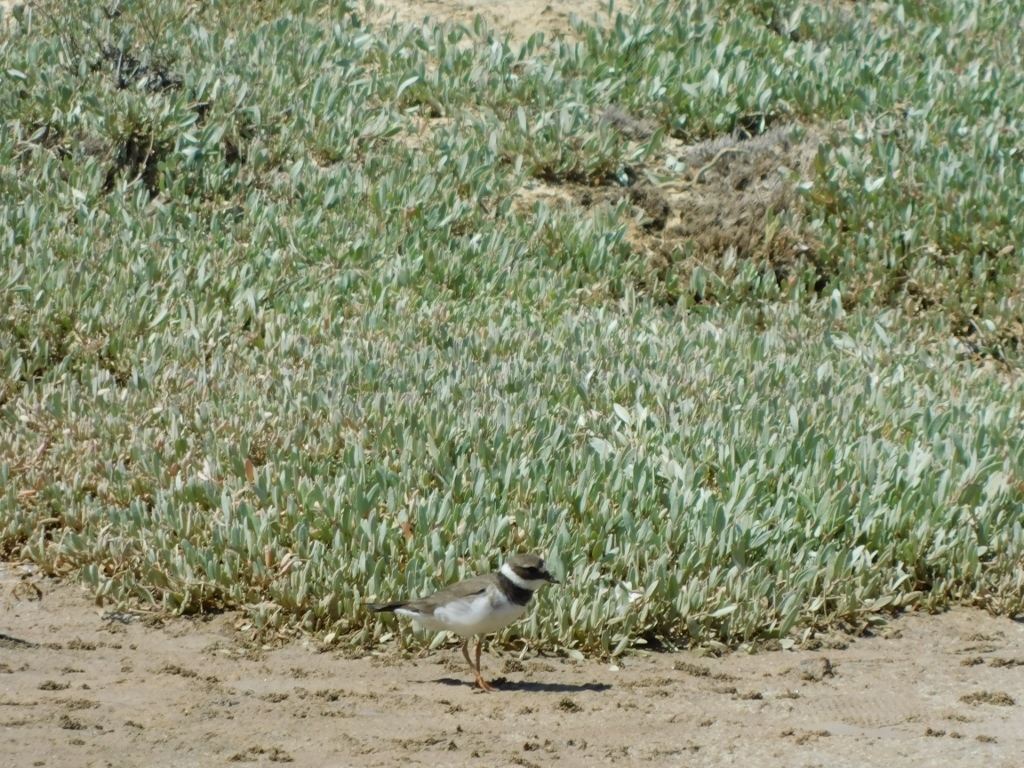 Common ringed plover
Common ringed plover
I assume this body of water is connected to the sea under ground and this couldn’t be seen from the outside obviously, so we just walked along the beach until we found a spot where there was a path, allowing us to venture a bit into the forest to see some birds.
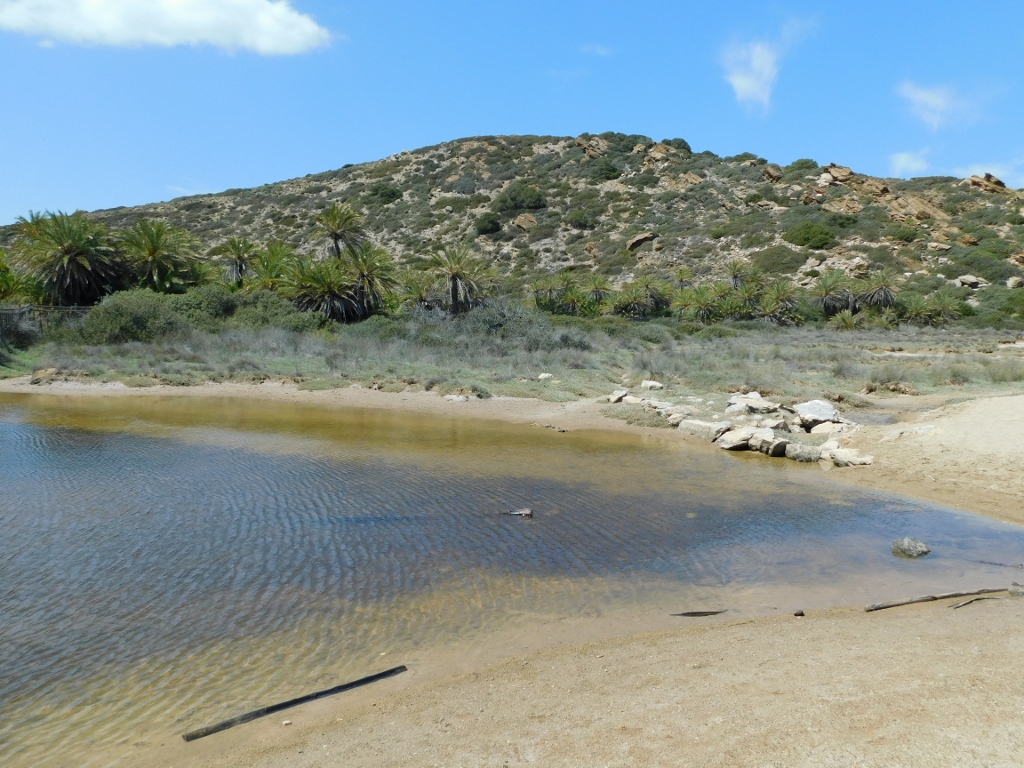 Body of water between the Vai Palm Forest and the beach
Body of water between the Vai Palm Forest and the beach
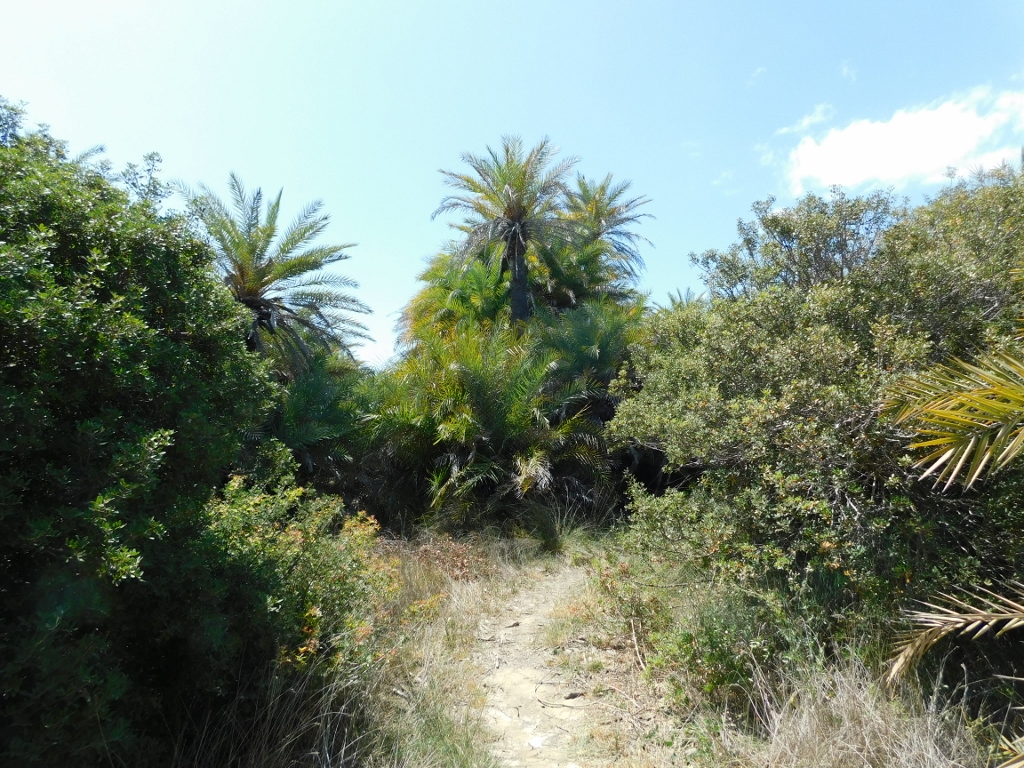 Path through the Vai Palm Forest
Path through the Vai Palm Forest
Needless to say, the ornithologists spotted several species again and Vuk enumerated them. This time, I even managed to spot several different species myself, although I only managed to capture one on camera. However, it was very cooperative, so I was able to take multiple shots. It was a wood sandpiper (Tringa glareola).
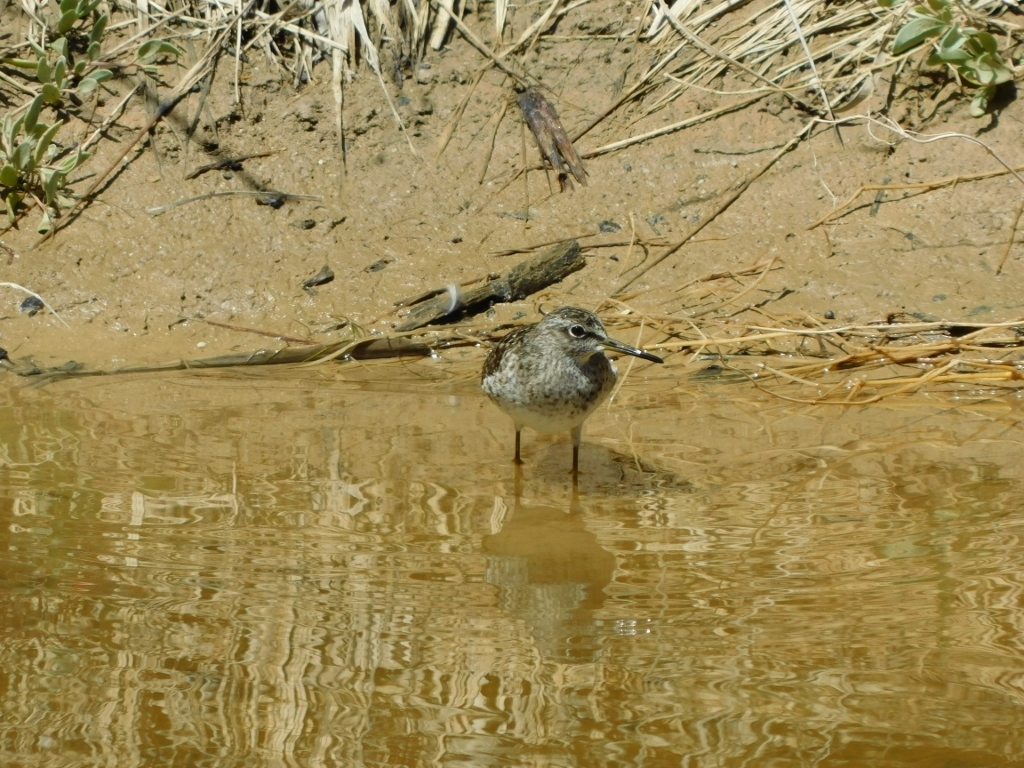 Wood sandpiper
Wood sandpiper
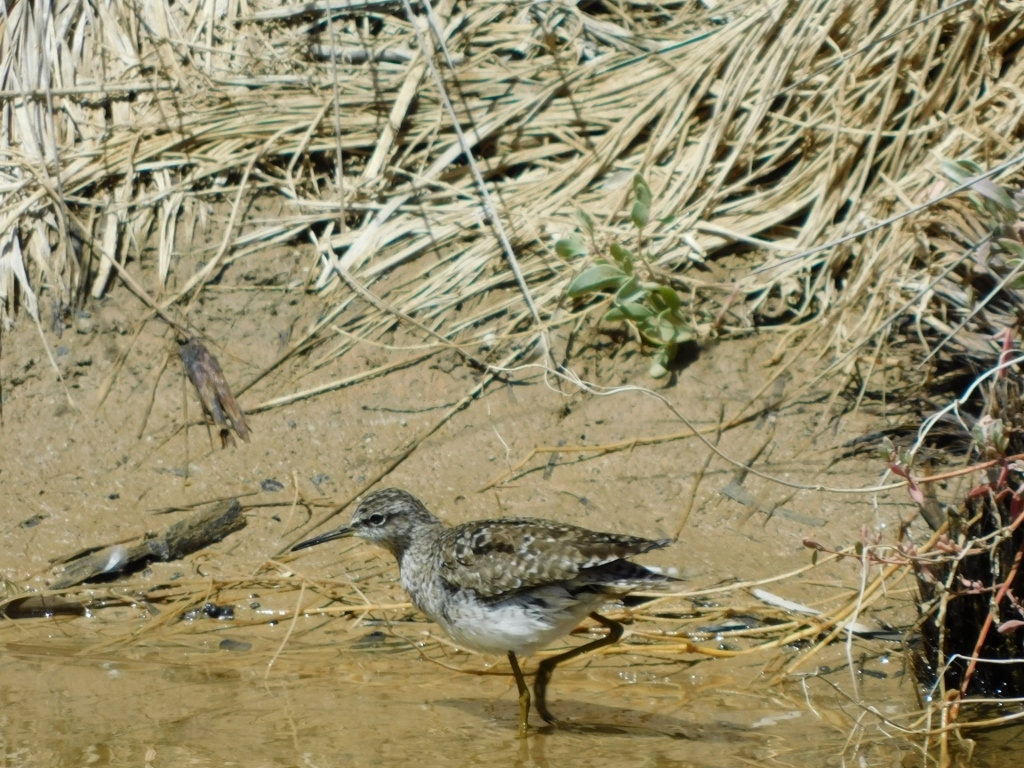 Wood sandpiper
Wood sandpiper
Then I ventured a bit further into the forest, hoping to capture another species on camera.
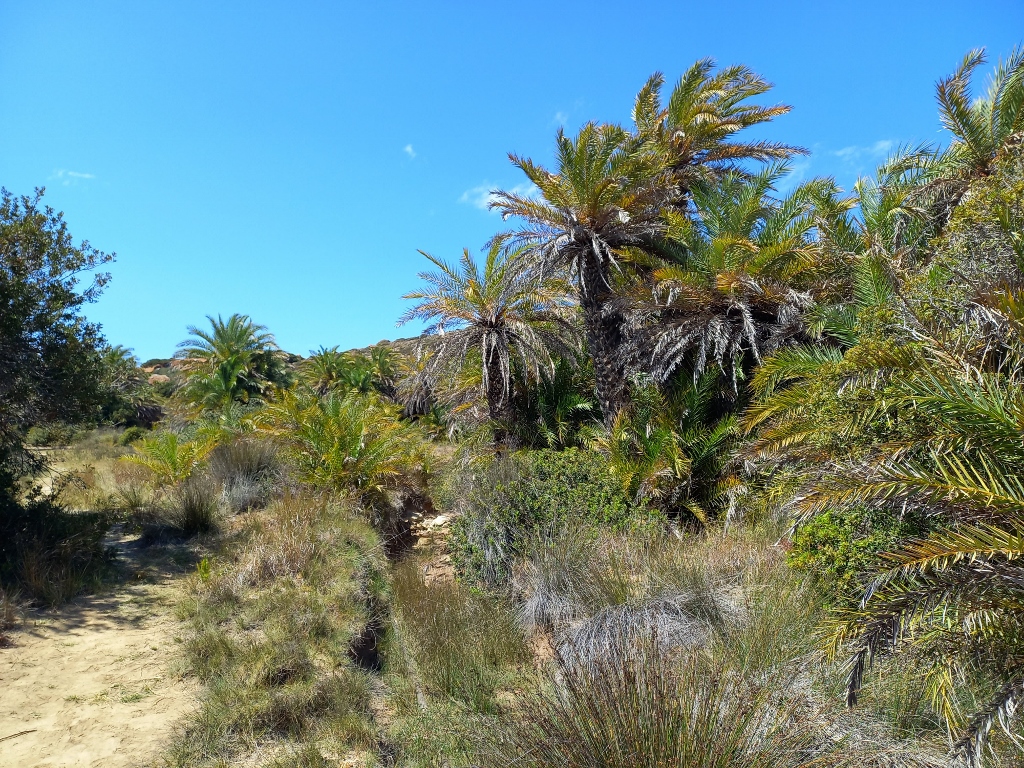 Path through the Vai Palm Forest
Path through the Vai Palm Forest
However, apart from getting a different angle on the small pond there, I still only managed to capture shots of the wood sandpiper. What I lacked in species diversity, I made up for with multiple shots of the same bird. Admittedly, I think this may have been a different individual of wood sandpiper than before, but that is not really important now.
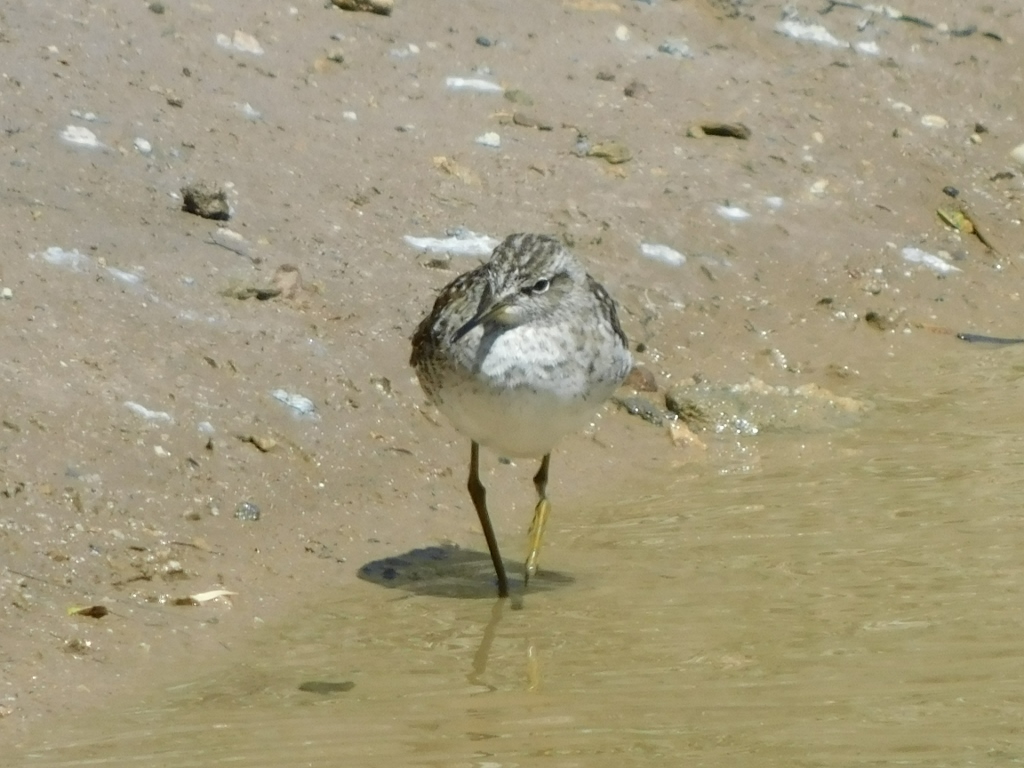 Wood sandpiper
Wood sandpiper
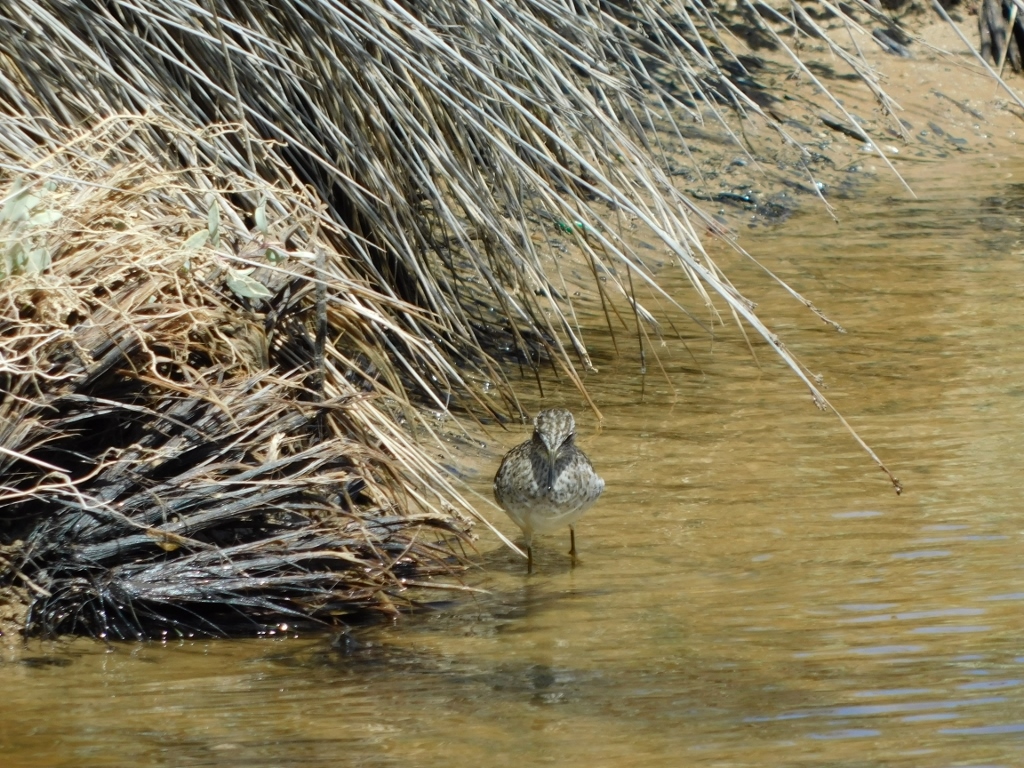 Wood sandpiper
Wood sandpiper
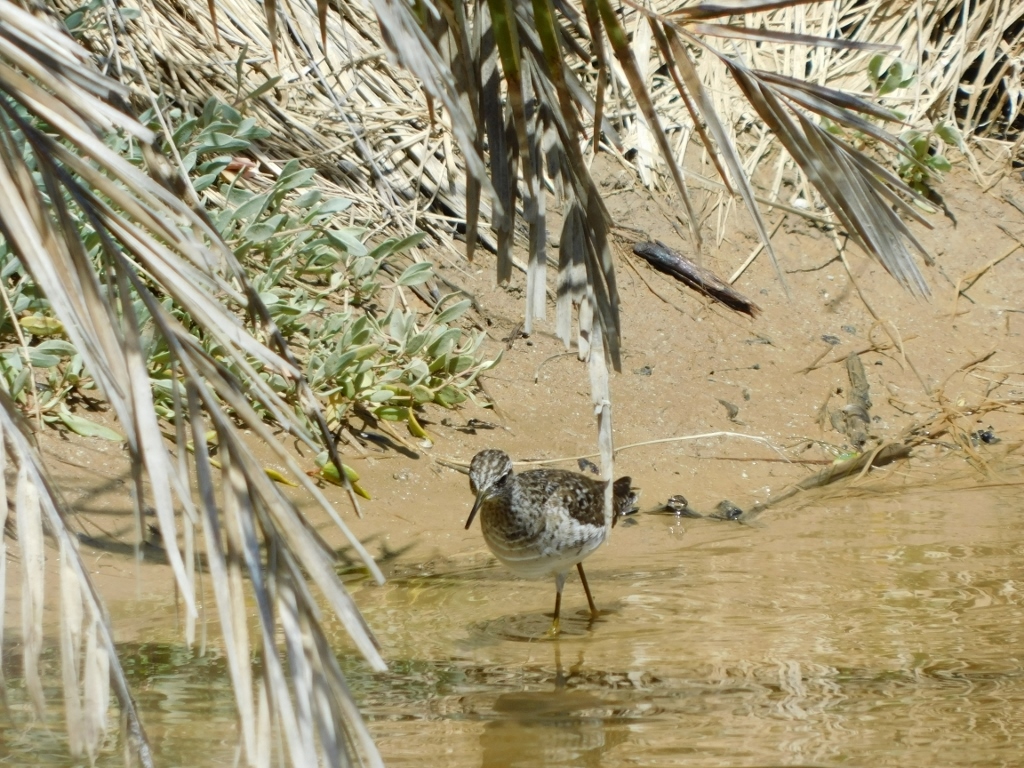 Wood sandpiper
Wood sandpiper
After this short walk along the outskirts of the Vai Palm Forest, we all returned to the cars and then drove to the village of (Ano) Zakros with the intention that some of us would walk through the (Kato) Zakros Gorge (also known as the Gorge of the Dead) in order to reach the sea and the settlement of Kato Zakros. I was ecstatic.
You see, when I stayed here before and walked that same path two years earlier, I was absolutely thrilled. When I wrote about that experience, it was a day filled with intense feelings of happiness and excitement, and the same happened when I translated that text into English. I joyfully read my own texts about that experience, too.
I don’t know what this is all about, reincarnation proponents would certainly tie it to some past life of mine, but that is not important to me. I was now eagerly looking forward to walking that wonderful path again.
To start with, we went to the village of Ano Zakros and parked two cars there, while the third car, driven by Saša, along with those who didn’t want or couldn’t walk for long, went to Kato Zakros to wait for us there.
Passing by the hotel where I had stayed two years earlier, I felt the need to stop by and say hello to the landlady. She remained in my memory as extremely kind. Although I had stayed here very briefly then, this time we recognised and warmly greeted each other. I told her that I had returned with my friends this time and as we parted ways, we wished each other all the best.
The six of us who decided to hike (Sonja, Beba, Irina, Marko, Vuk and I) first walked through the streets of Ano Zakros and soon moved onto an old asphalt road leading out of the village. I remembered that we needed to turn left at some point and there were also markings, so even though I wasn’t entirely sure where to leave the asphalt road, everything turned out well in the end.
Initially, we were worried that it might start raining, but the weather remained dry and we were able to complete the entire route easily and without any problems.
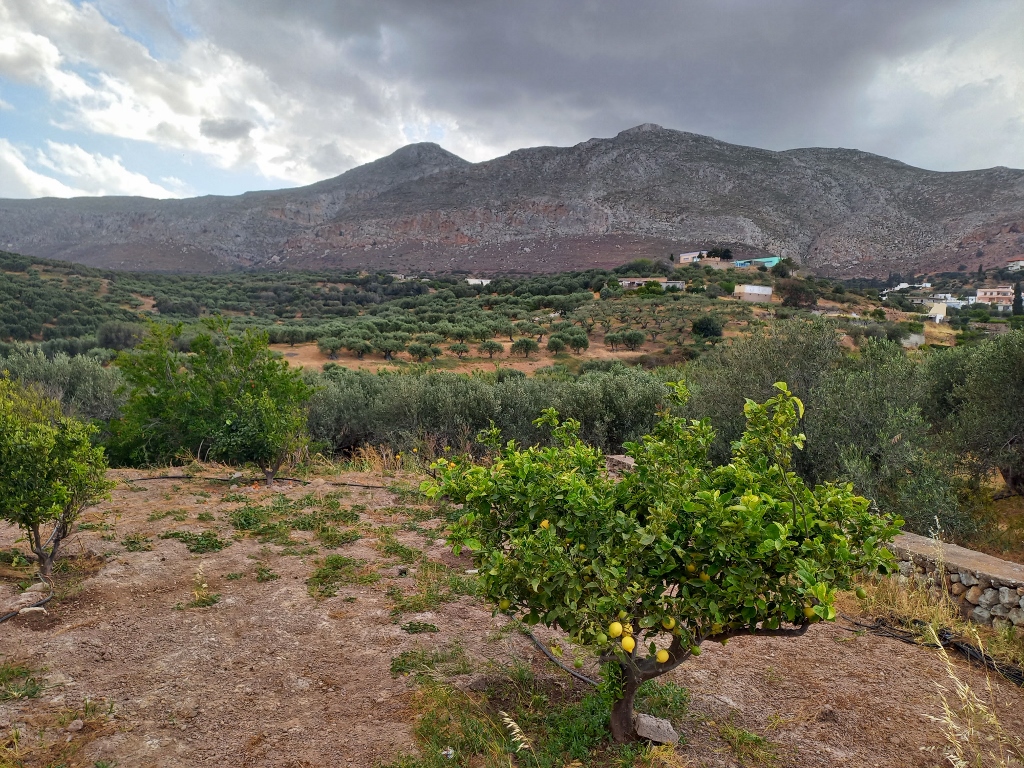 Rainclouds above the mountains close to Zakros
Rainclouds above the mountains close to Zakros
My experience of the first passage through the Kato Zakros Gorge or the Gorge of the Dead can be found on my travel blog along with an explanation of the alternate name (see: https://svudapodji.com/en/crete-18/). Nevertheless, even now, I still found some details beautiful and interesting, especially since I saw more birds (not significantly more) and I was walking in company this time.
When you descend from that asphalt road, you first follow a path through an olive grove, then you come to a gate that is closed, opens easily, but it needs to be closed again when you cross to the other side. This is important because numerous sheep and goats can be seen in the gorge. I don’t know to whom they belong; they are certainly not wild, but it is probably important that they don’t mix with others that may come there or leave the gorge in a place not intended for them.
We encountered goats along the trail, but there were also goats and sheep on the surrounding rocks and ridges.
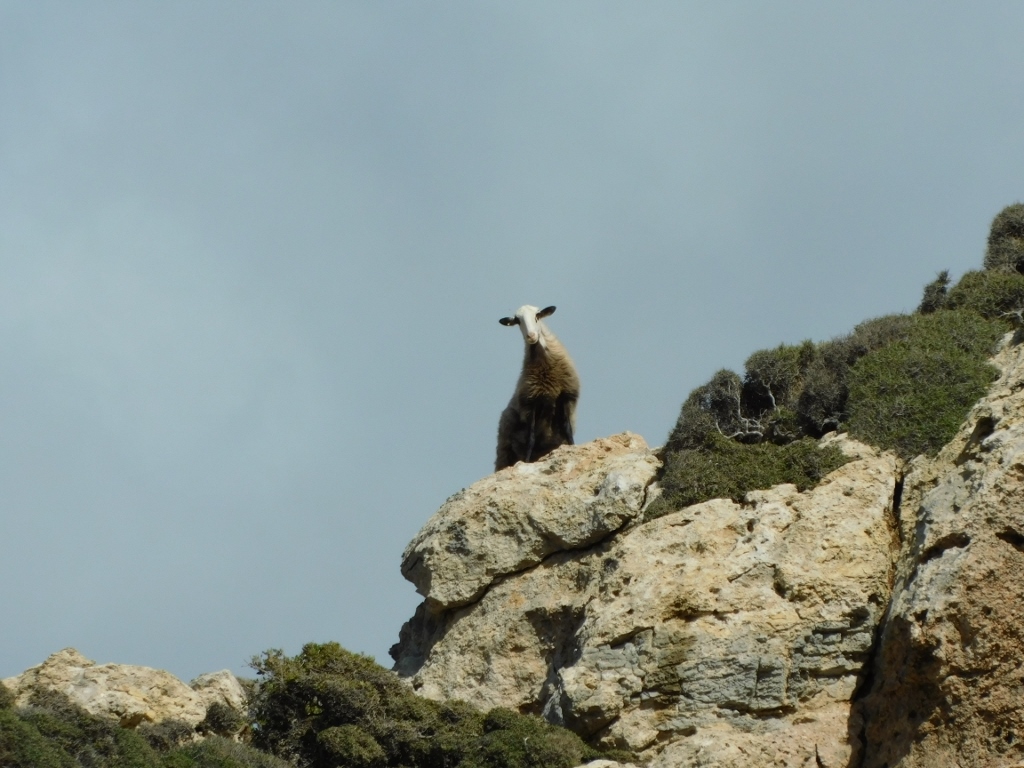 There’s somebody watching you
There’s somebody watching you
 There’s somebody watching you
There’s somebody watching you
It is important to keep in mind that it is not always easy to spot animals here. For example, the goat in the previous photograph can also be seen in the next one, but it is a bit harder to pinpoint its exact location.
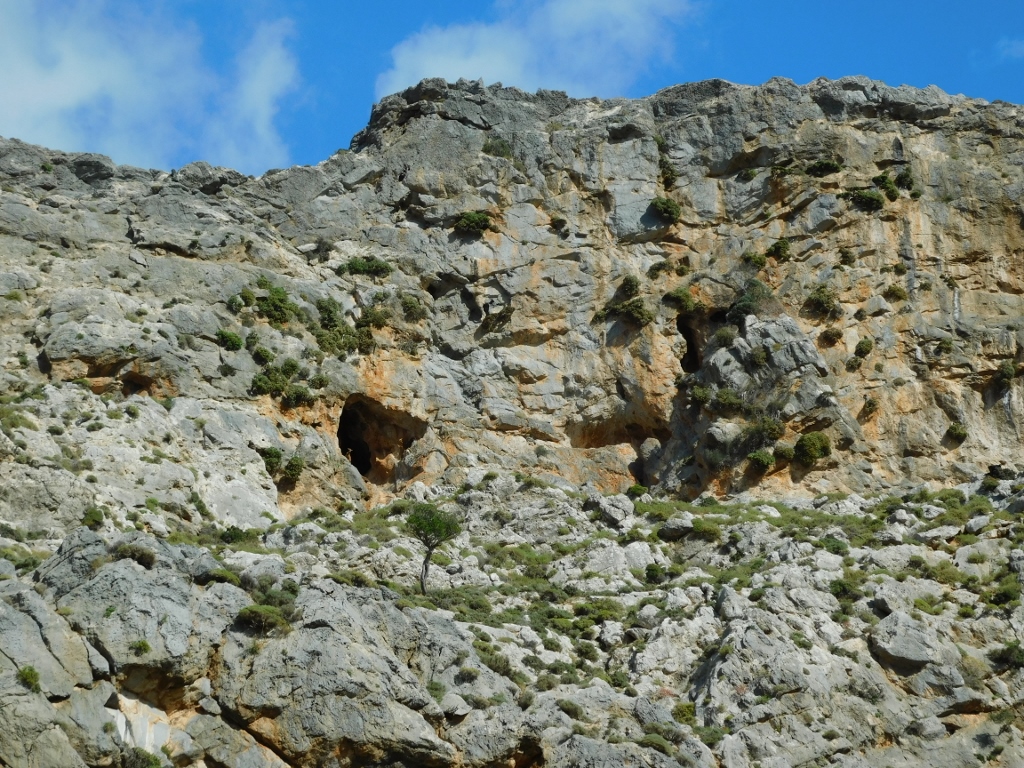 Cliffs of the Kato Zakros Gorge and a goat
Cliffs of the Kato Zakros Gorge and a goat
So, at one point, we noticed some birds in a crevice in the rock. It was a pair of ravens (Corvus corax).
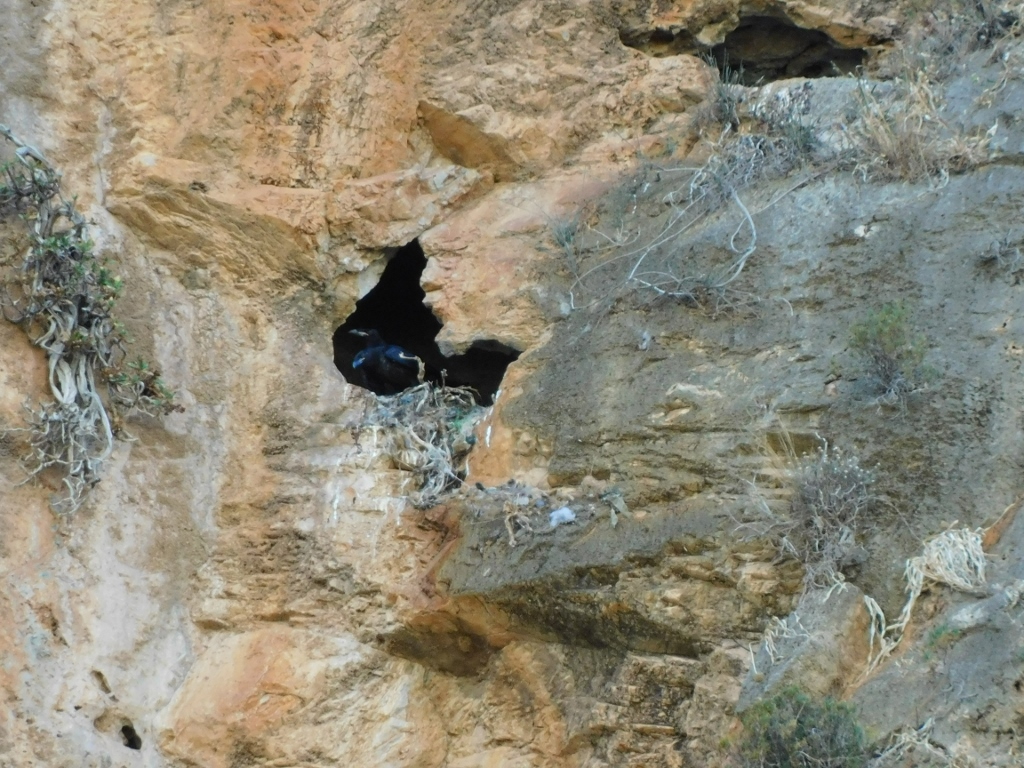 Ravens
Ravens
Although the bottom of the gorge is filled with dense vegetation, the sides are rocky, so the vegetation is sparse and adapted. However, here and there, a tree finds a cosy spot and grows sheltered, tucked away on a steep slope.
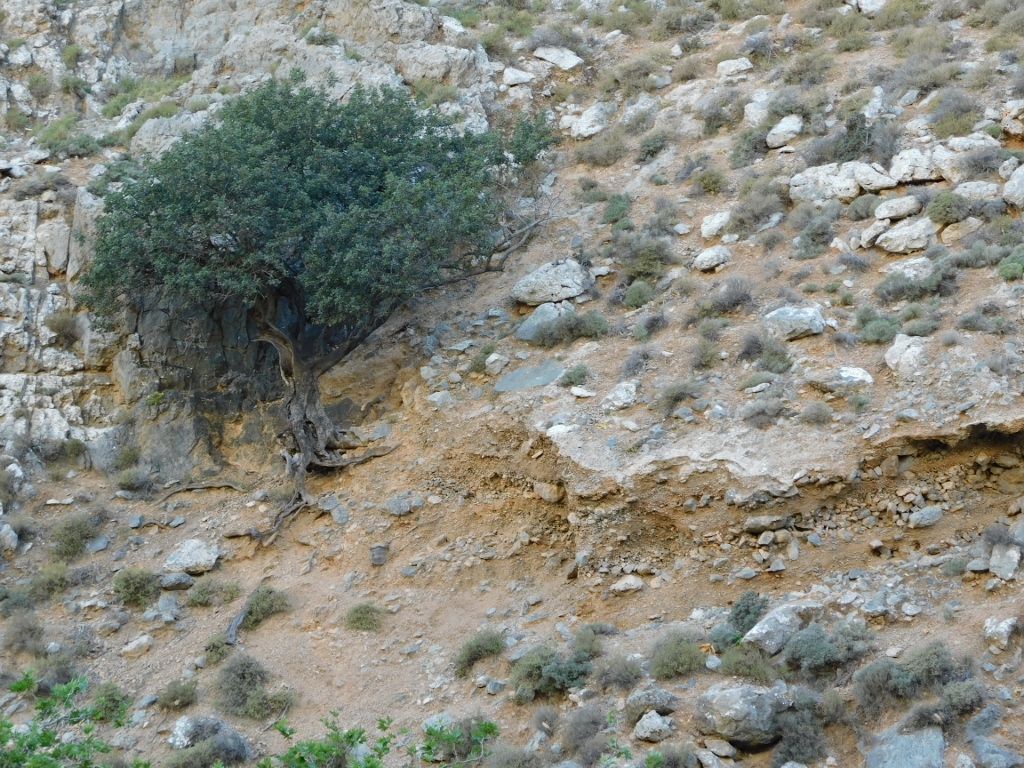 Kato Zakros Gorge, a detail
Kato Zakros Gorge, a detail
As for the birds, besides the previously mentioned species, I only managed to capture two more, although Vuk, of course, noted down more of them. In my “defence,” I can say that it is not easy to spot birds. You need to see the next picture (where I don’t even see any bird) to get an idea of what the surroundings can look like. In the photo after that, taken more or less in the same spot, with the same vegetation, you can see a spotted flycatcher (Muscicapa striata), not necessarily easily, but these two pictures illustrate why experience, knowledge and binoculars are a requirement.
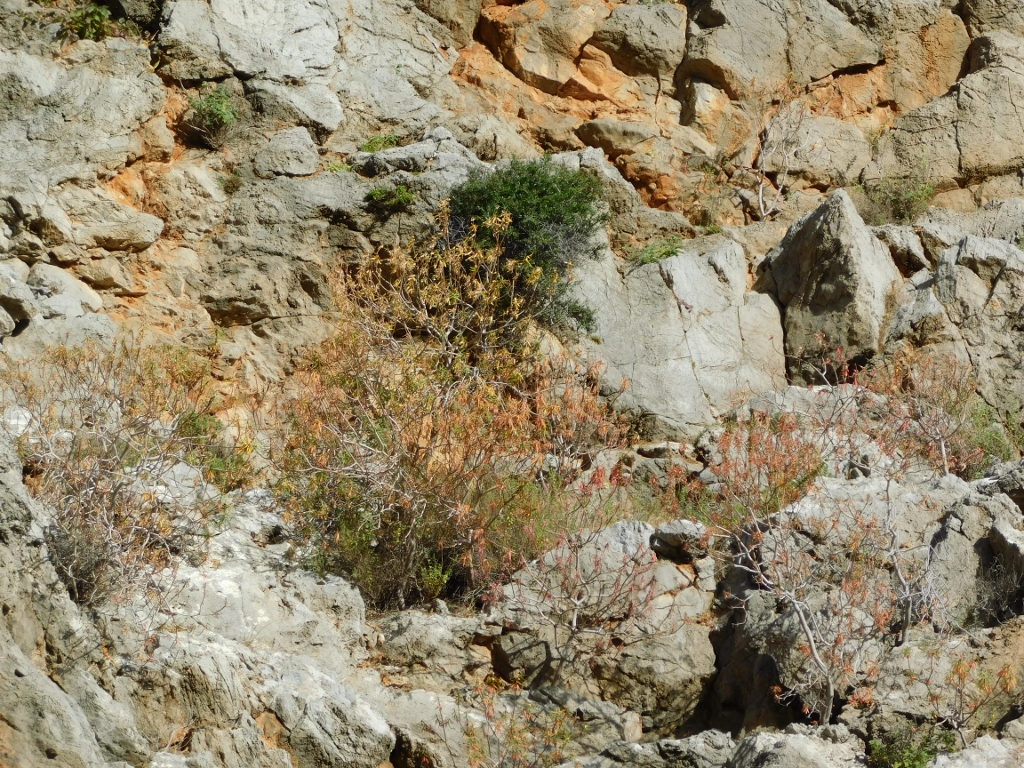 Kato Zakros Gorge, a detail
Kato Zakros Gorge, a detail
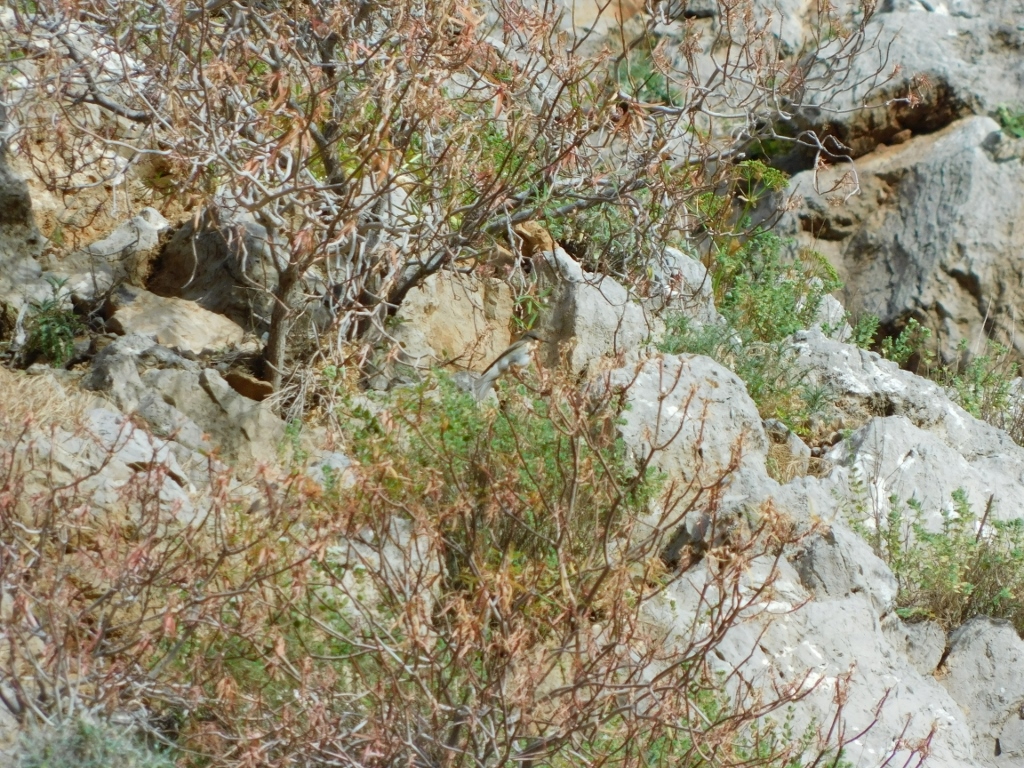 Spotted flycatcher
Spotted flycatcher
 Spotted flycatcher
Spotted flycatcher
One other species, concretely a male blue rock thrush (Monticola solitarius), we could all see clearly because of its feather colour, but I barely managed to capture it in a photo. It only paused briefly high on a cliff before deciding to fly off to another side.
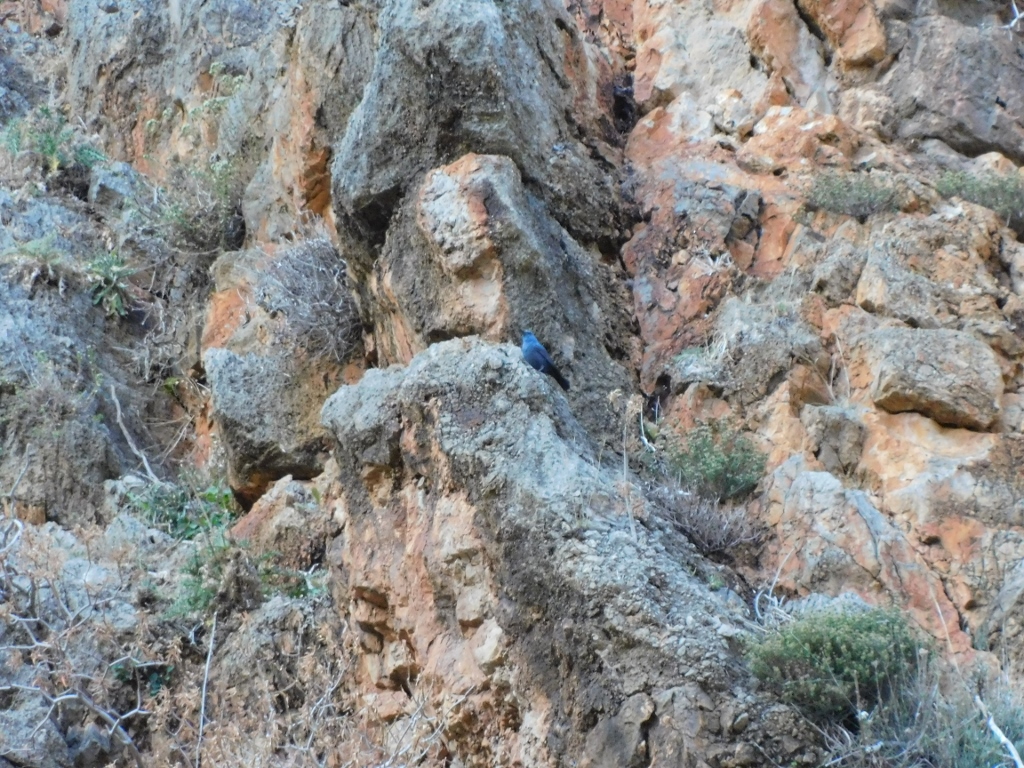 Blue rock thrush
Blue rock thrush
I spent the rest of the time in the Gorge of the Dead walking, thoroughly enjoying myself, occasionally taking photos of both the people I was with and the surroundings.
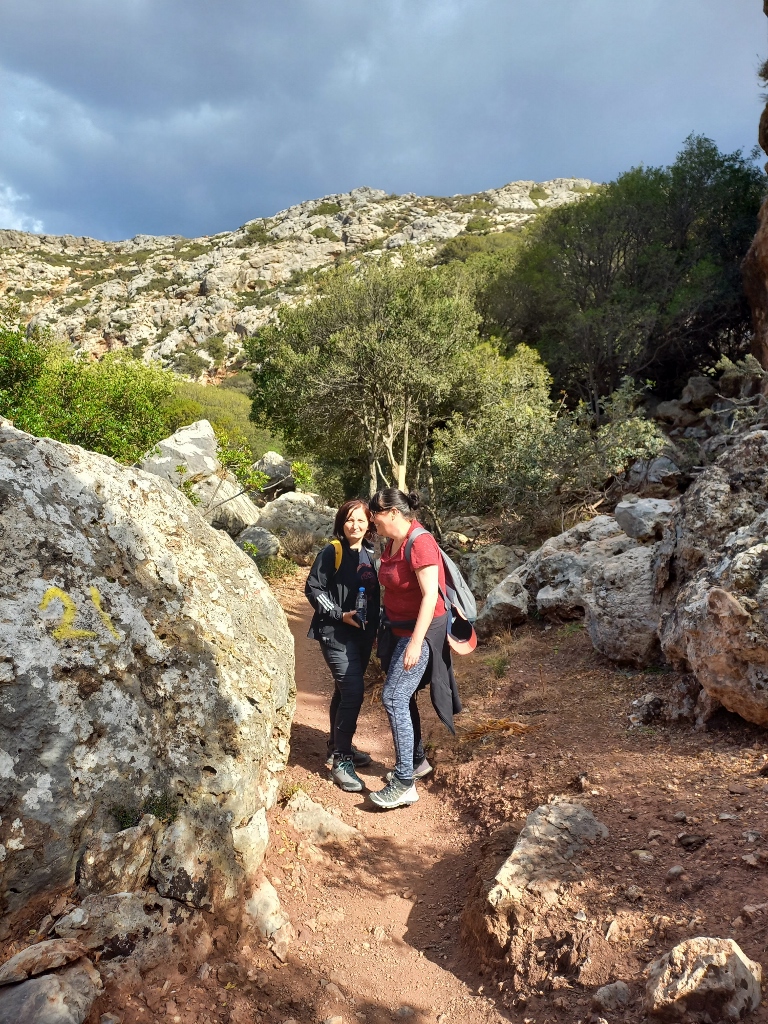 Sonja and Beba
Sonja and Beba
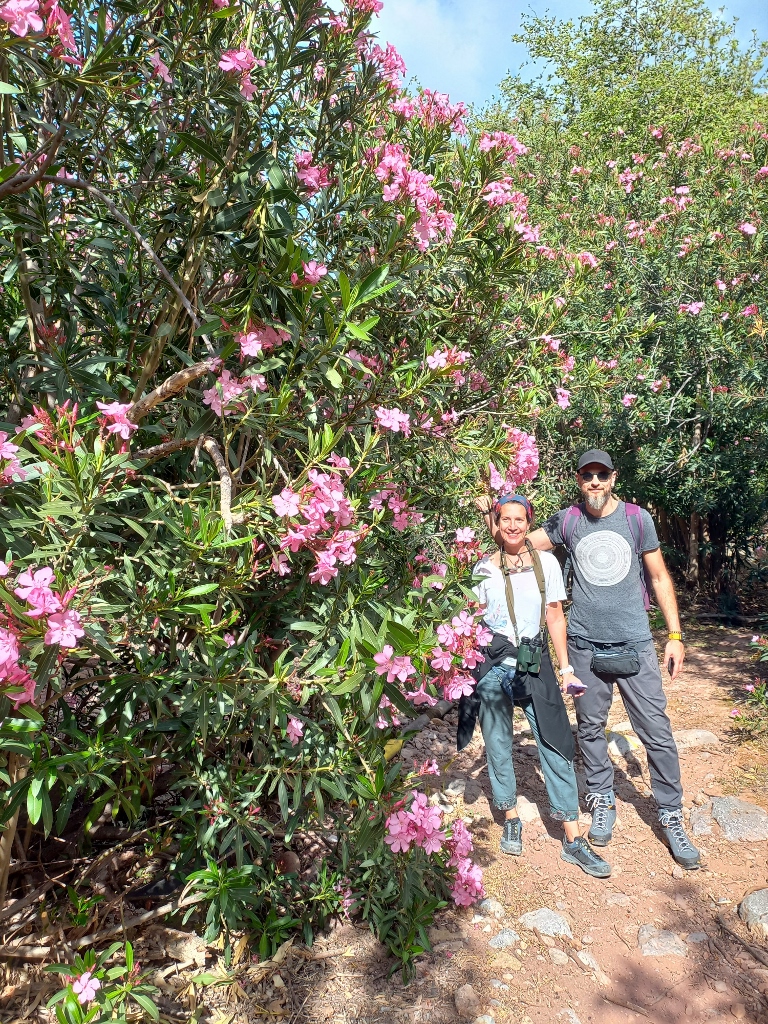 Irena and Marko
Irena and Marko
By the way, where I took the above photo of Irena and Marko, the trail crosses over the bed of the local river or stream. Two years ago, I had to be careful how I did it in order to avoid falling into the water. However, as we had already heard, this year there was significantly less rainfall than usual, so the riverbed was completely dry.
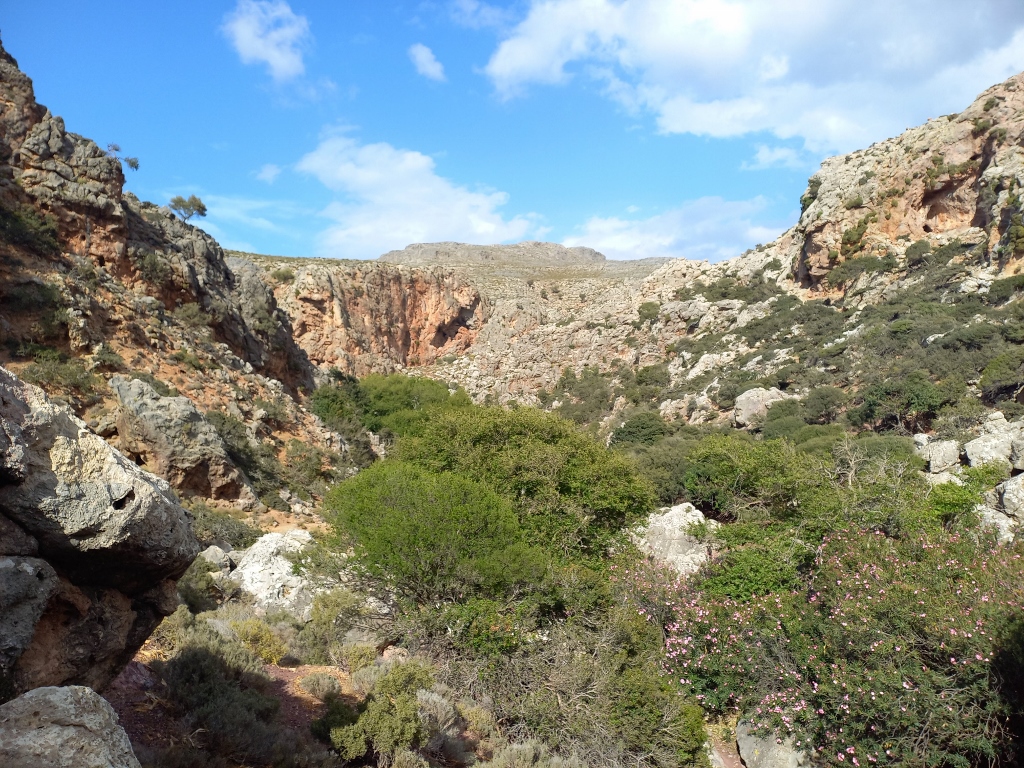 Kato Zakros Gorge
Kato Zakros Gorge
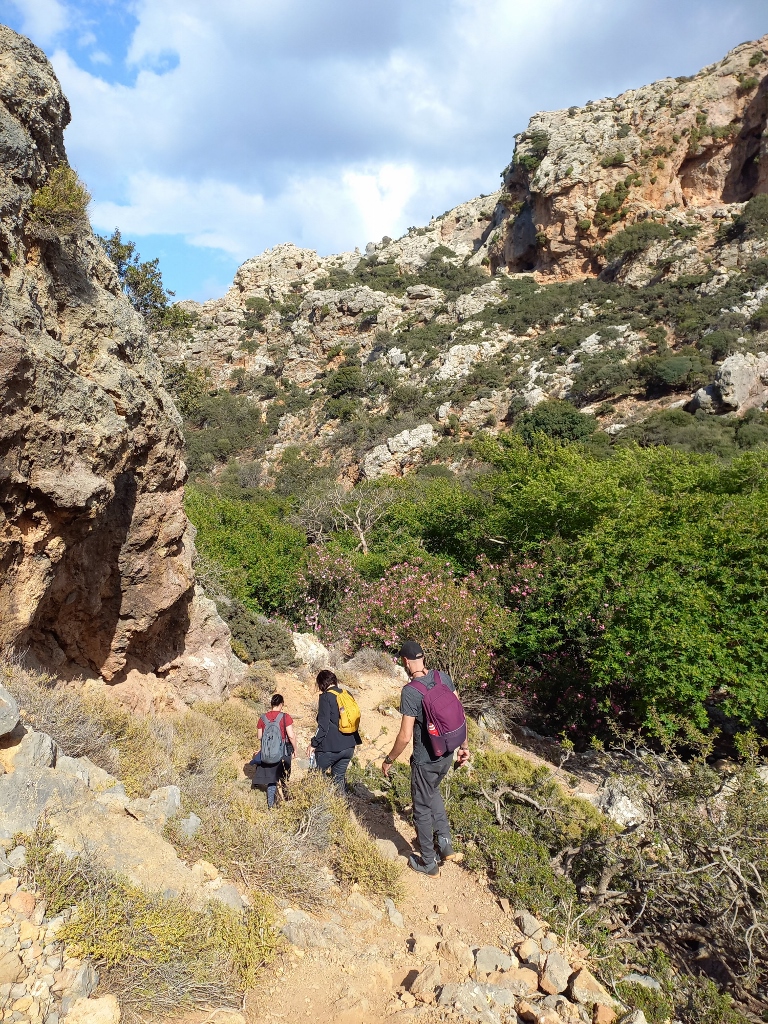 Beba, Sonja and Marko
Beba, Sonja and Marko
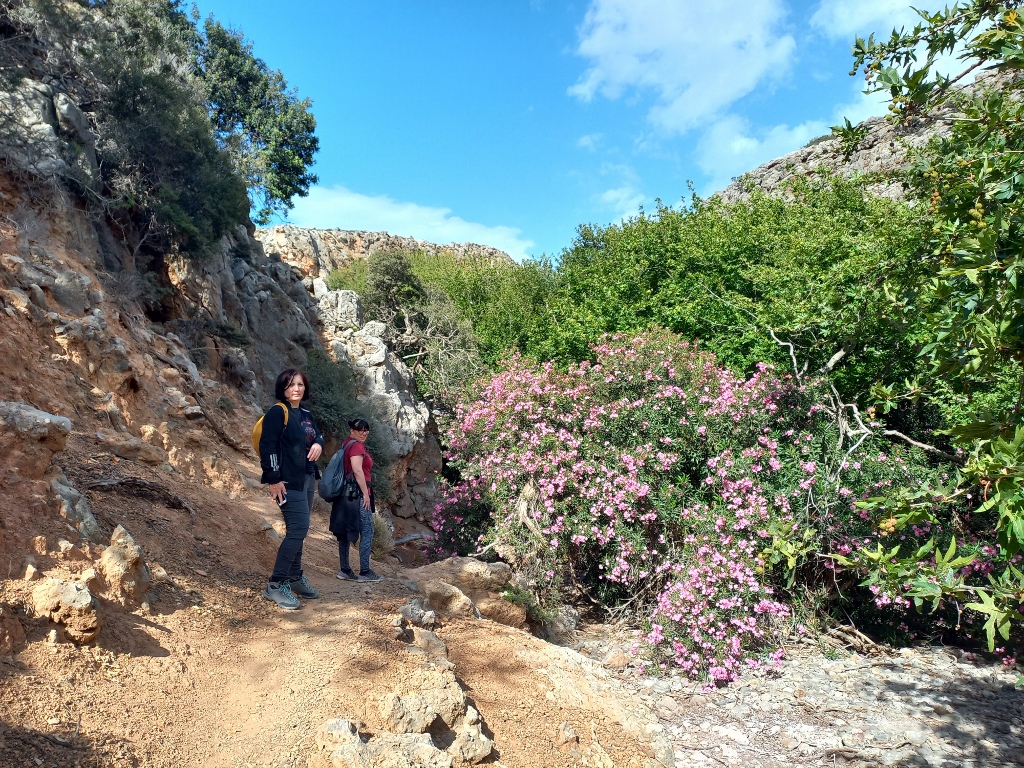 Sonja and Beba
Sonja and Beba
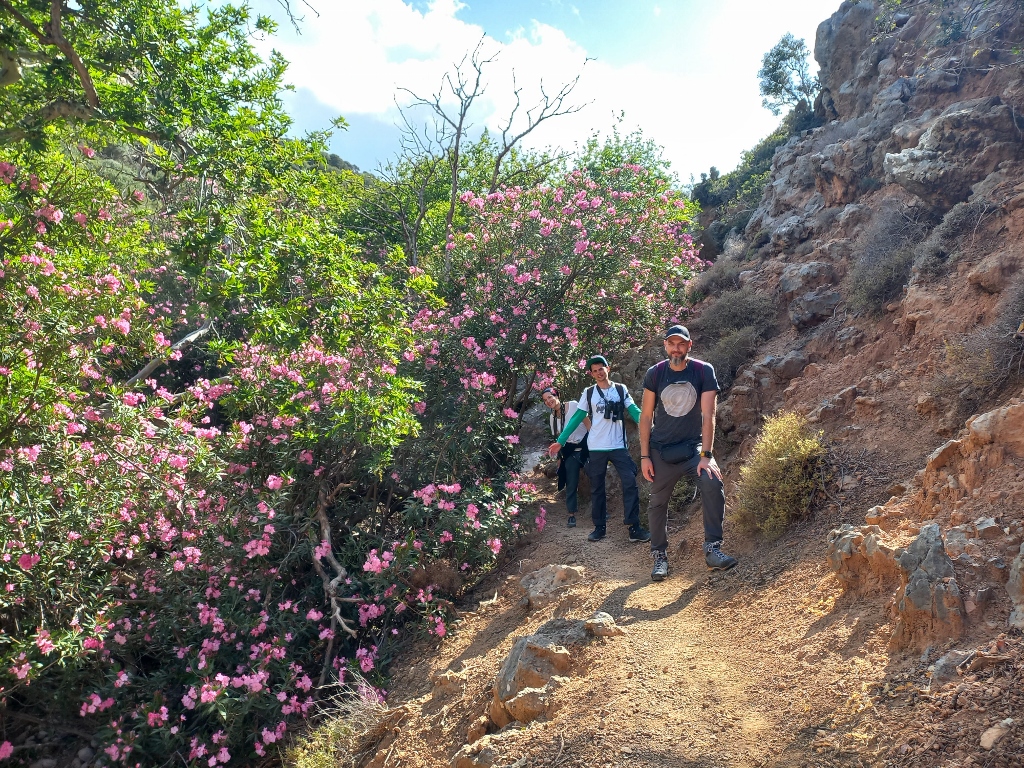 Irena, Vuk and Marko
Irena, Vuk and Marko
At one point, we passed by a magnificent tree that I admired back in 2022. Fortunately, this time Irena was there, serving as a “reference object” to showcase the beauty of this tree.
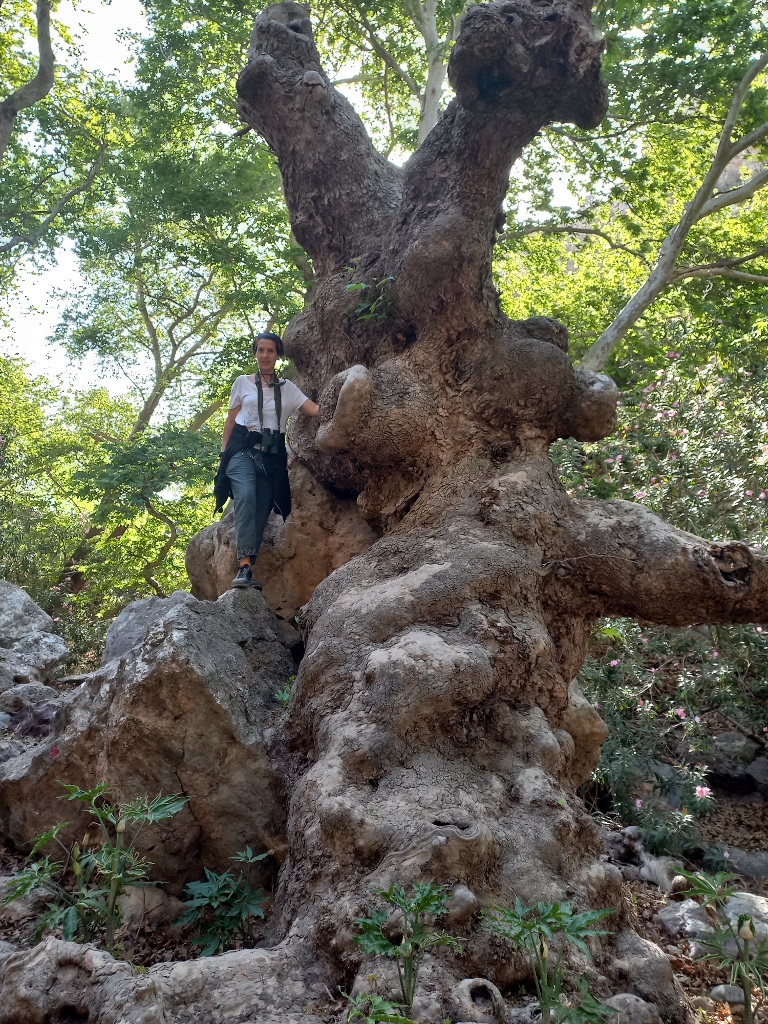 Irena and the magnificent tree
Irena and the magnificent tree
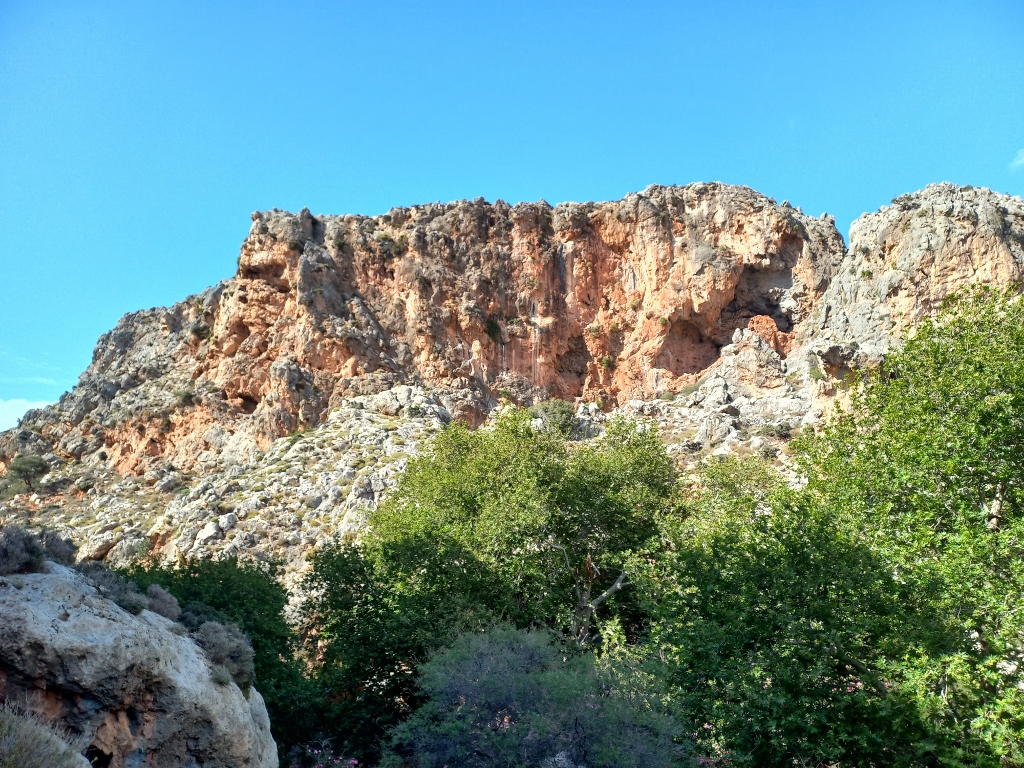 Kato Zakros Gorge
Kato Zakros Gorge
Basically, we all went at our own pace here. At some points, we stretched out, at others, we came closer together, but it was important that we enjoyed ourselves. On the other hand, it is hard to get lost here – the trail is wider in some places, narrower in others, sometimes more visible, sometimes less so, but in any case, there are regular markings, especially on parts over rocks and cliffs where one might veer off onto a more challenging path. In any case, it is practically impossible to get lost because you are essentially just following the bottom of the gorge.
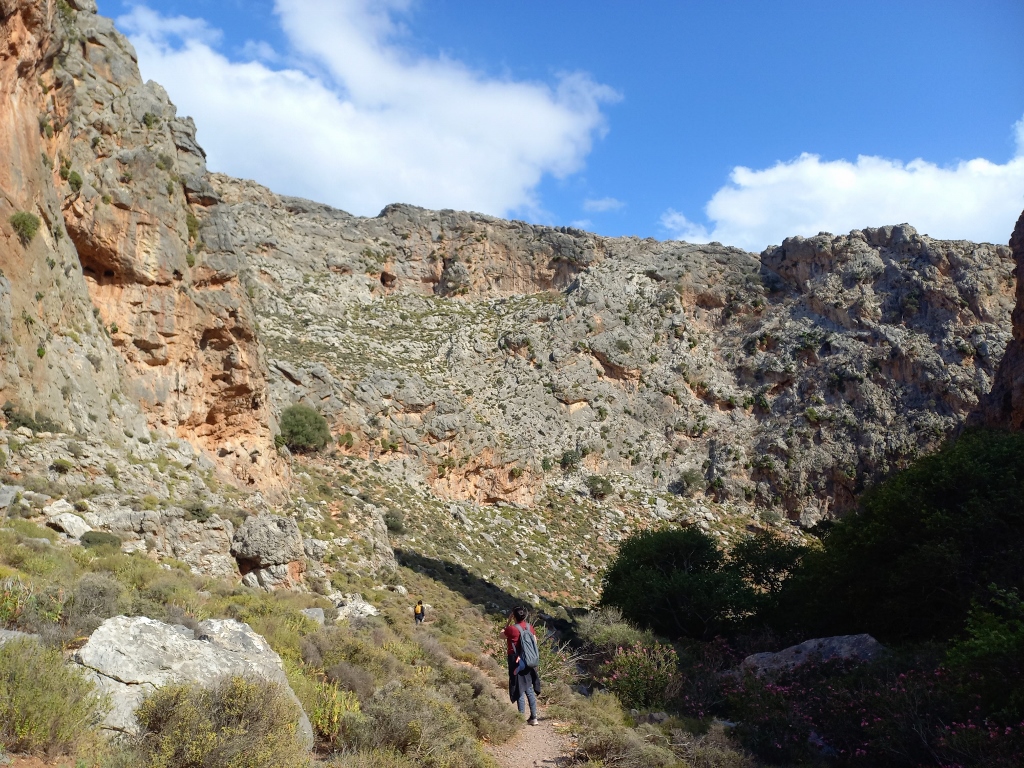 Kato Zakros Gorge
Kato Zakros Gorge
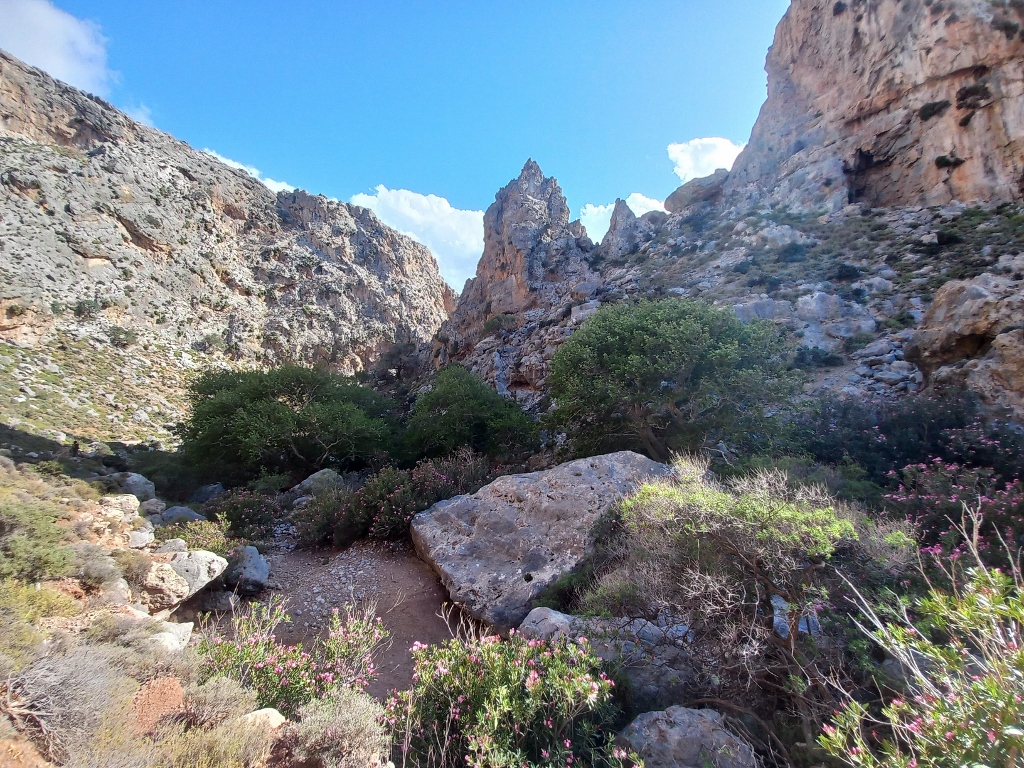 Kato Zakros Gorge
Kato Zakros Gorge
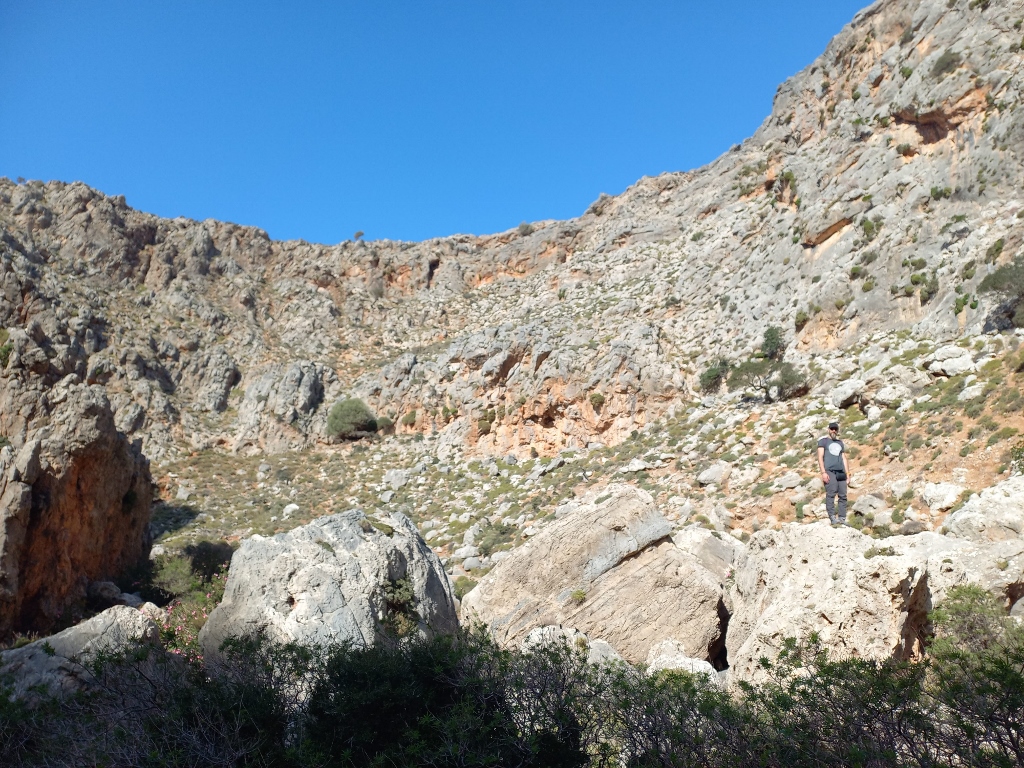 Kato Zakros Gorge and Marko
Kato Zakros Gorge and Marko
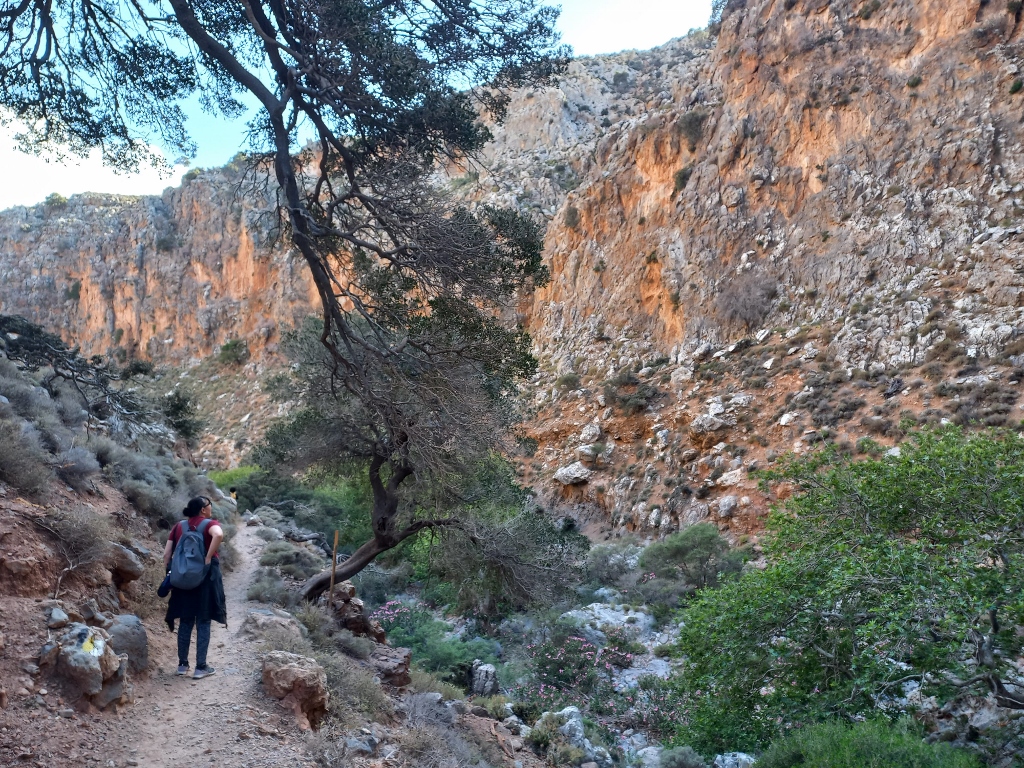 Beba and Sonja (in the distance)
Beba and Sonja (in the distance)
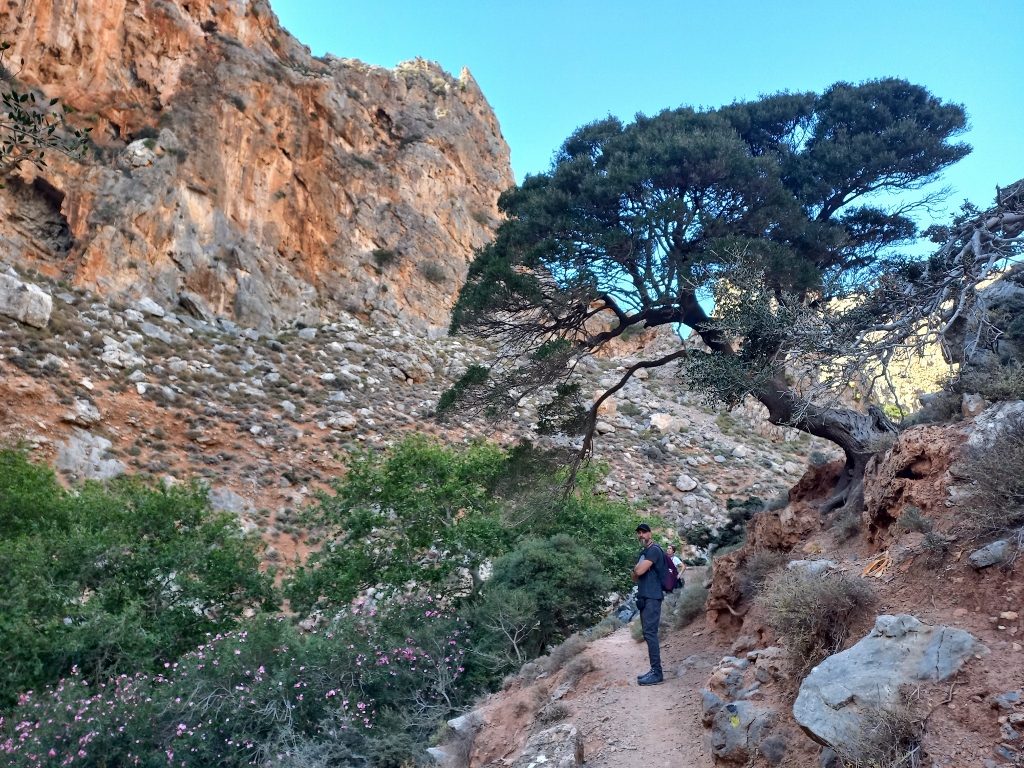 Marko and Irena
Marko and Irena
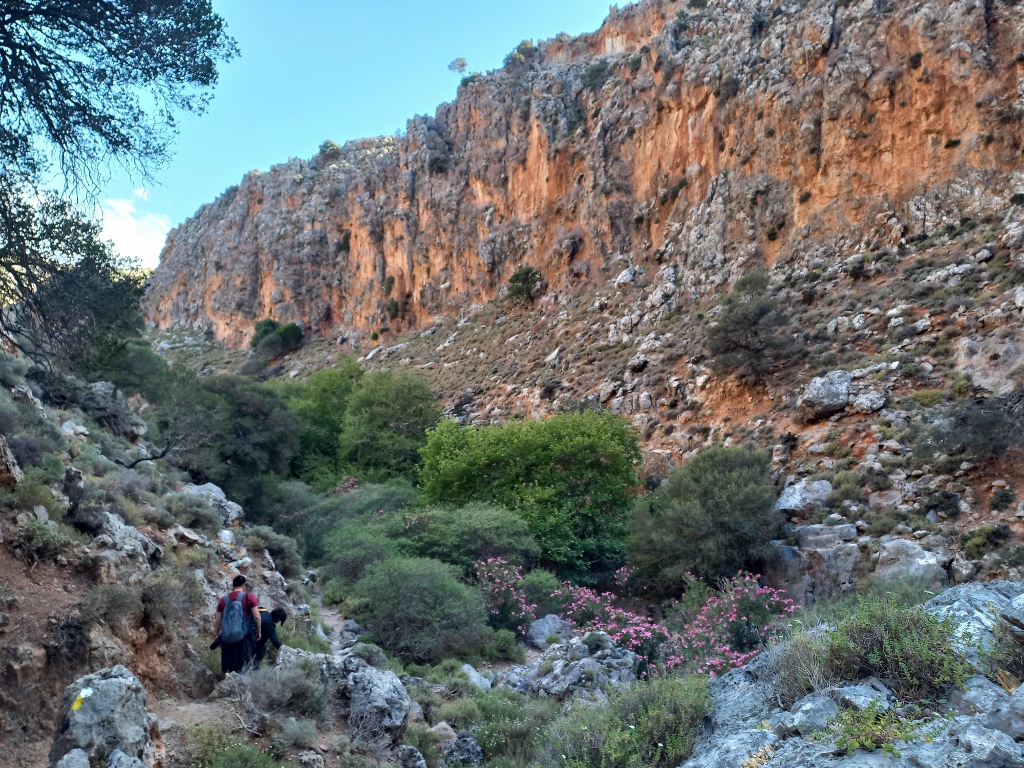 Beba and Sonja
Beba and Sonja
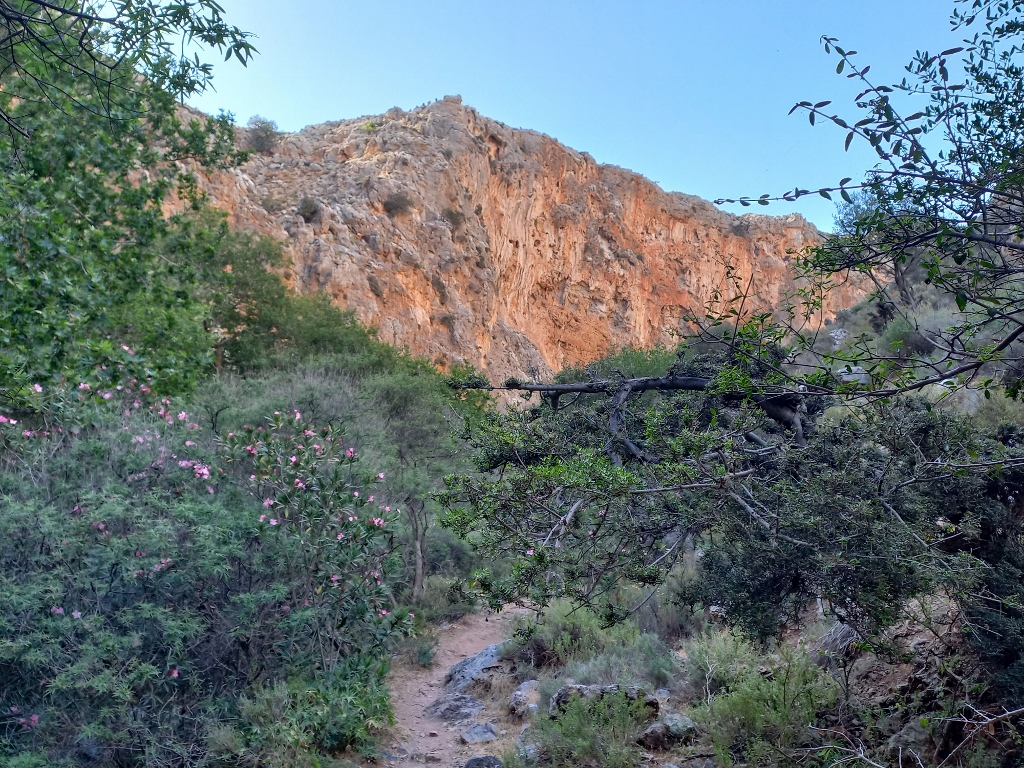 Kato Zakros Gorge
Kato Zakros Gorge
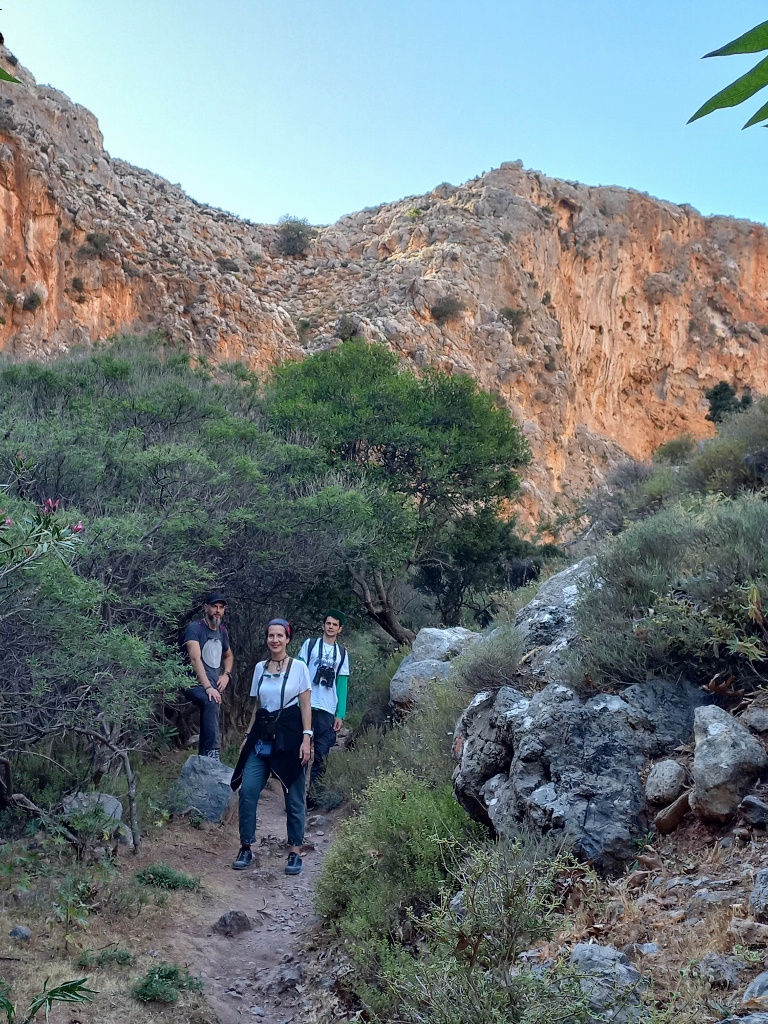 Marko, Irena and Vuk
Marko, Irena and Vuk
At one point, we came across another interesting tree and I wanted to take a photo there. Marko and the others arrived at just the right moment.
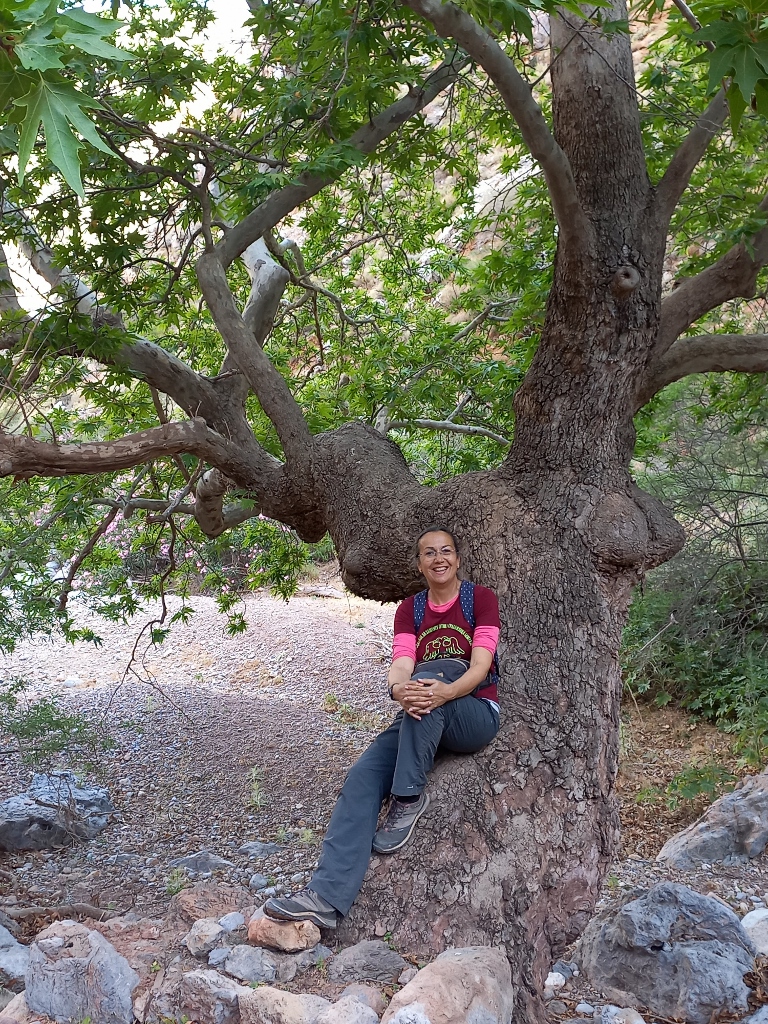 In the Kato Zakros Gorge in 2024
In the Kato Zakros Gorge in 2024
Then I let them walk ahead of me for a bit.
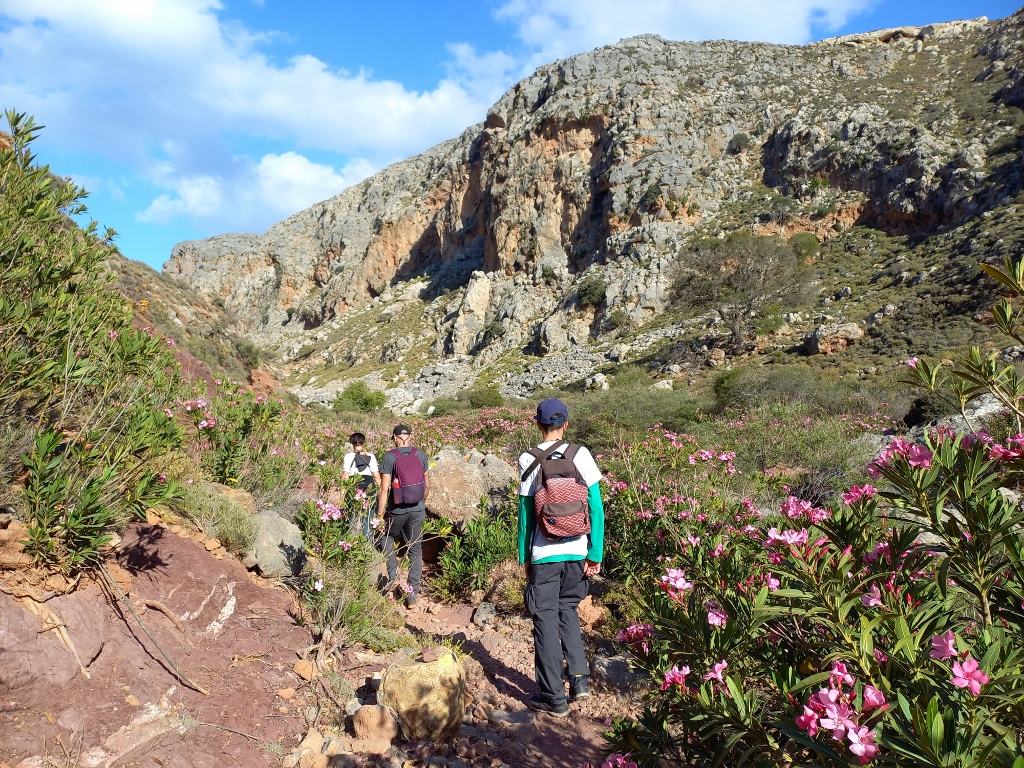 Irena, Marko and Vuk
Irena, Marko and Vuk
At some point, a couple came up behind me who seemed to be in a hurry, so I let them pass as well.
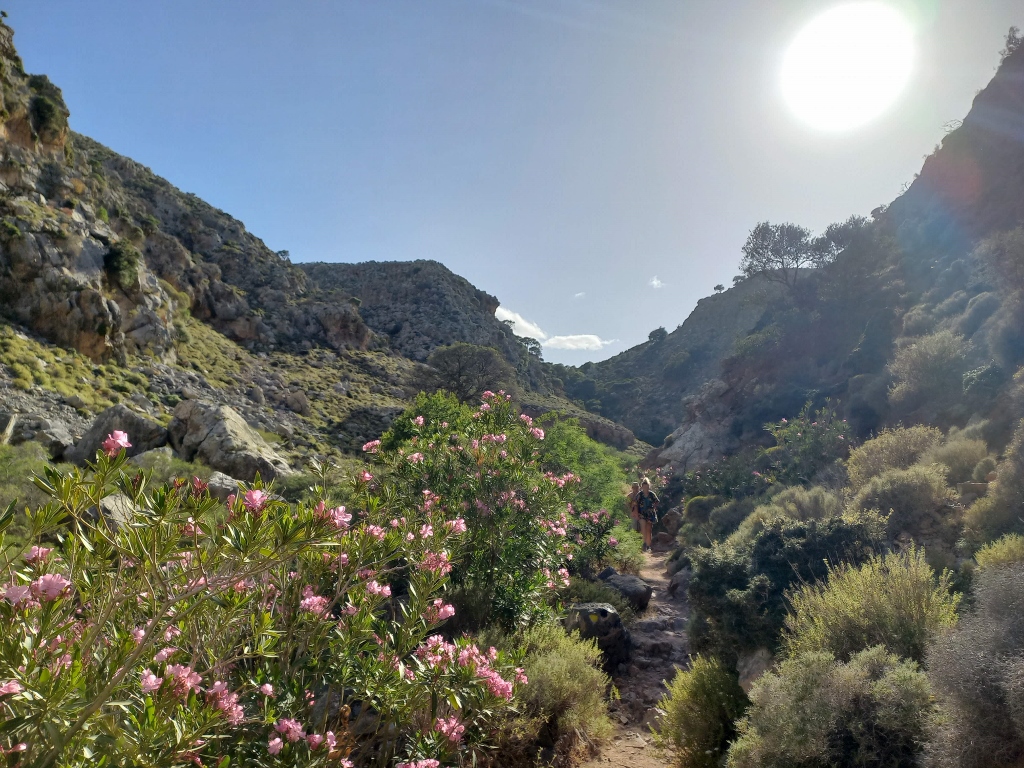 Kato Zakros Gorge
Kato Zakros Gorge
After a short while, I passed again by Irena [Hribšek] and Vuk [Popić], two wonderful, young, smart, well-mannered, dedicated and very educated ornithologists.
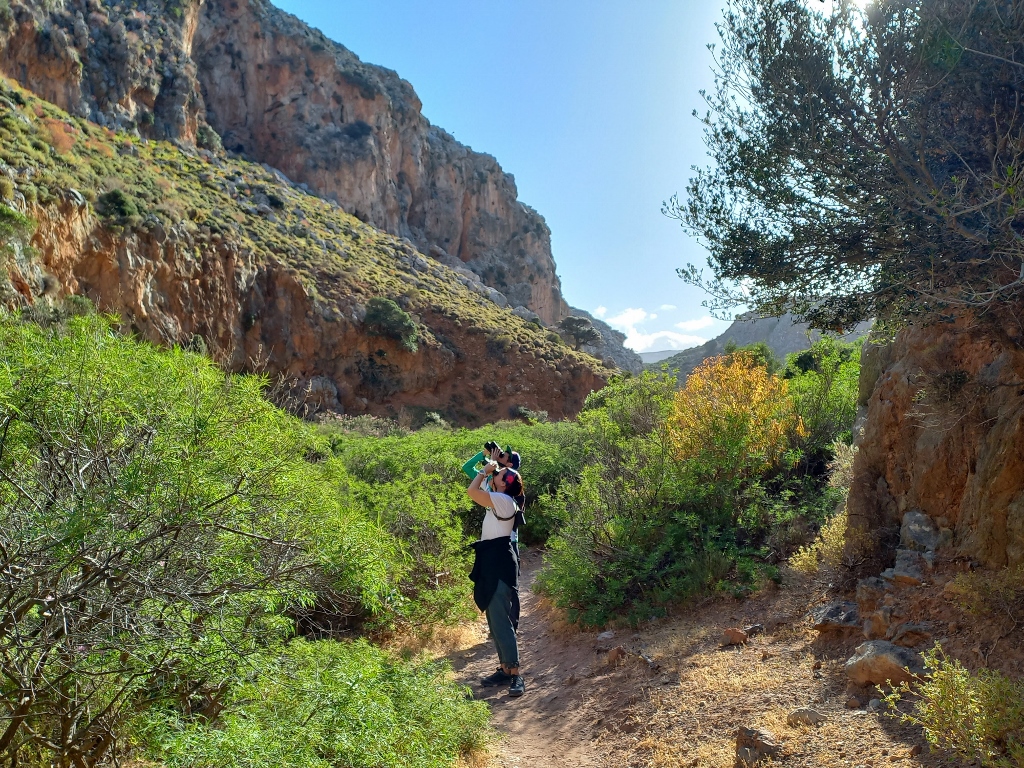 Irena and Vuk
Irena and Vuk
In one section, I found myself alone on the trail again, in the sense that I didn’t see anyone else. There, I remembered to take a selfie. I’m glad I did it. The Kato Zakros Gorge seems like one of my happy places, so it is nice to have another memory of it.
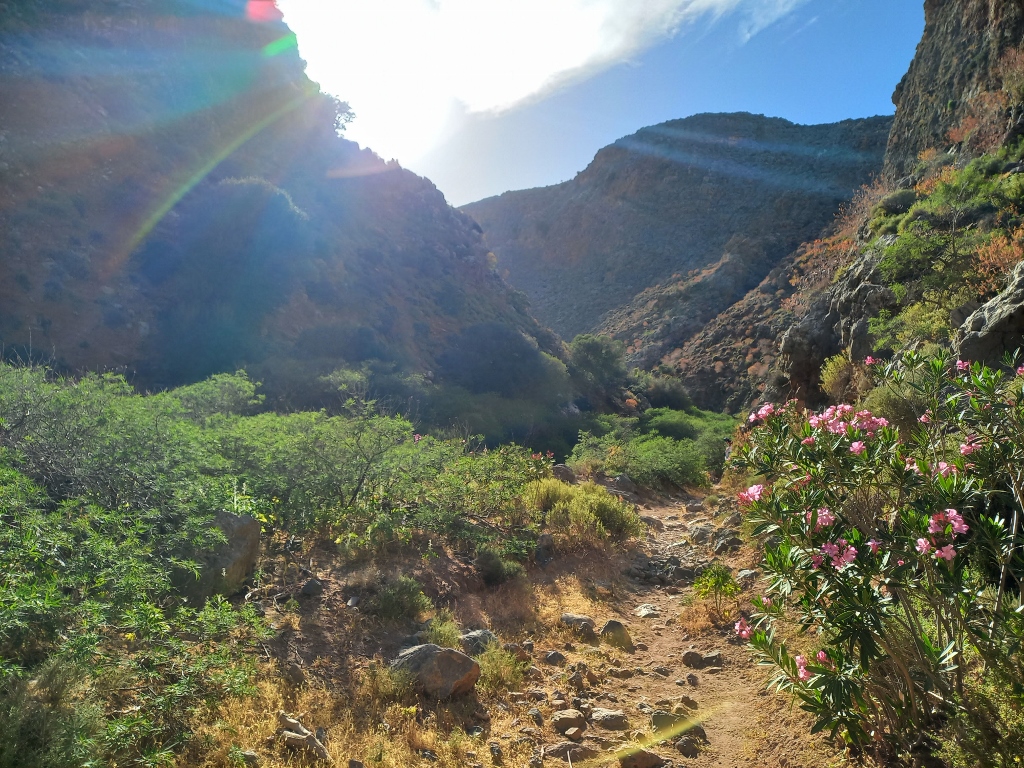 Kato Zakros Gorge
Kato Zakros Gorge
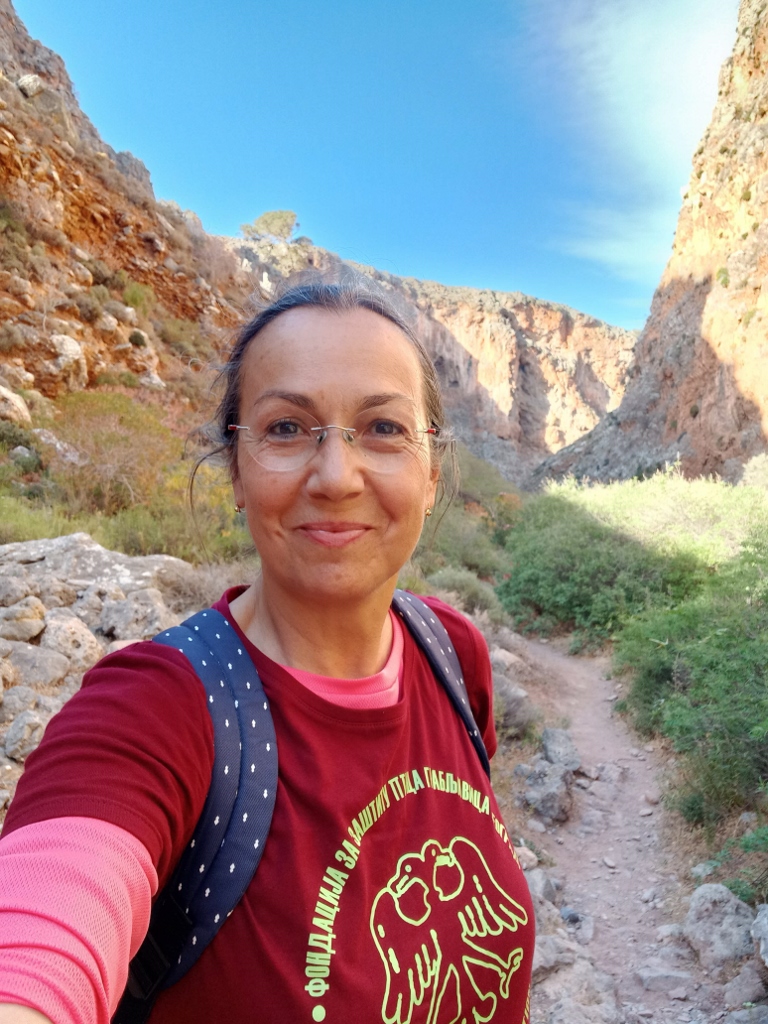 In the Kato Zakros Gorge in 2024
In the Kato Zakros Gorge in 2024
Towards the end of the trail, which is about 5 km long, the cliffs start to become lower and there is also a bend in the shape of a horseshoe.
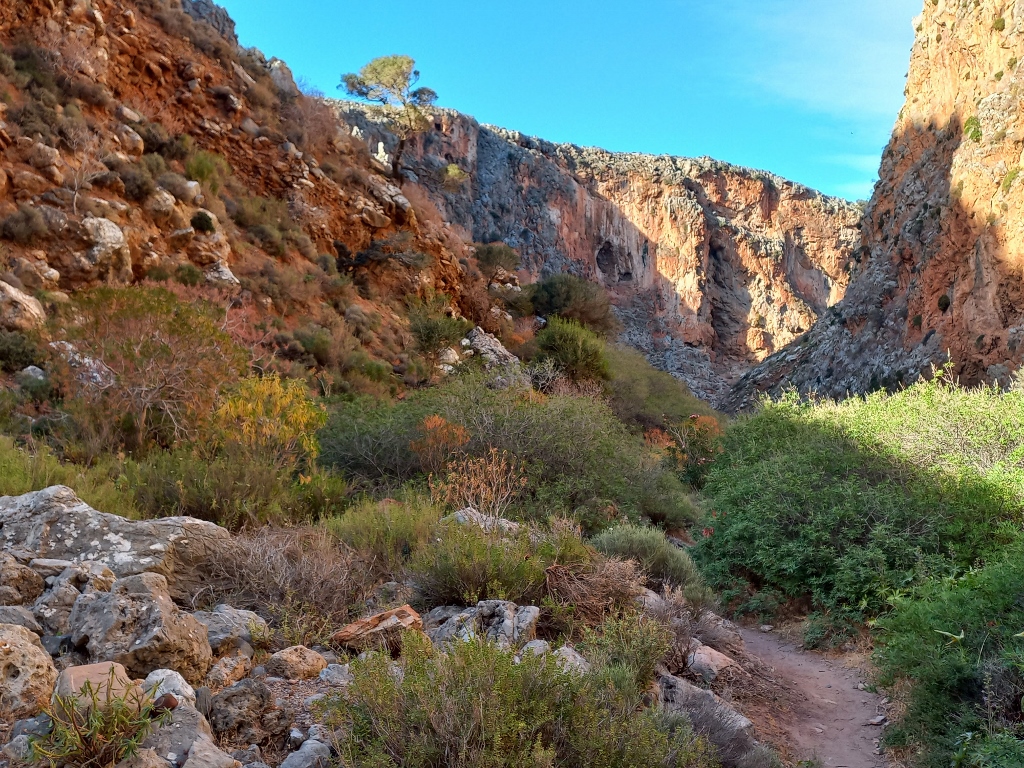 Kato Zakros Gorge
Kato Zakros Gorge
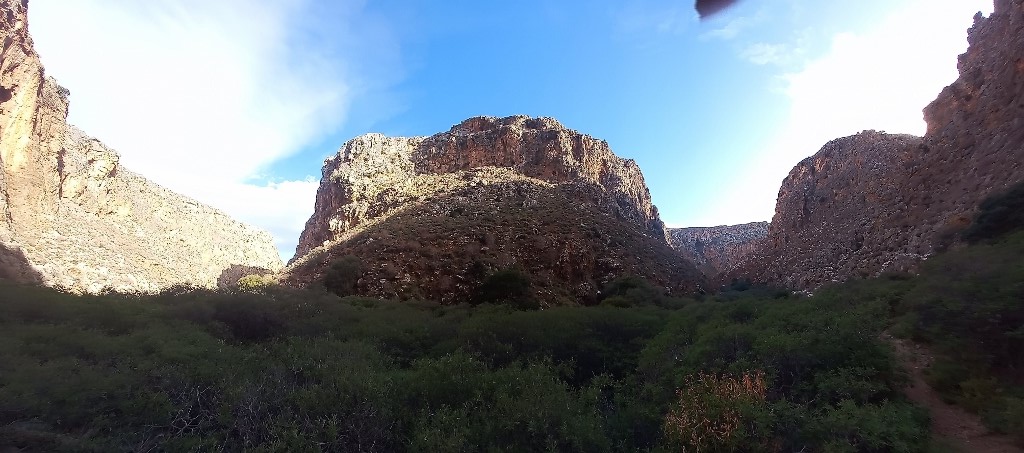 Kato Zakros Gorge
Kato Zakros Gorge
As we were exiting the gorge, I took another photo of Irena, Marko and Vuk.
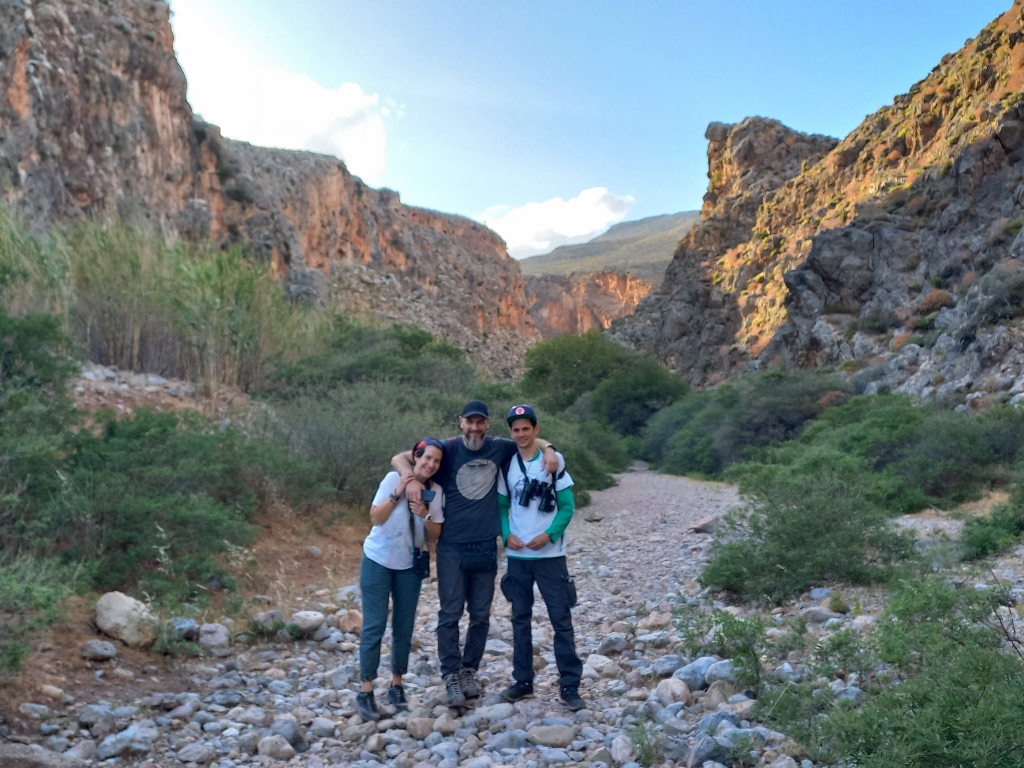 Irena, Marko and Vuk at the exit from the Kato Zakros Gorge
Irena, Marko and Vuk at the exit from the Kato Zakros Gorge
When you exit the gorge, you come out onto an asphalt road that at one end leads to Kato Zakros Beach. Along the way, you pass by interesting sights. At one point, I saw a lemon tree that was full of fruit and no one had picked them, so many had fallen to the ground. I thought it was a shame, but what can you do.
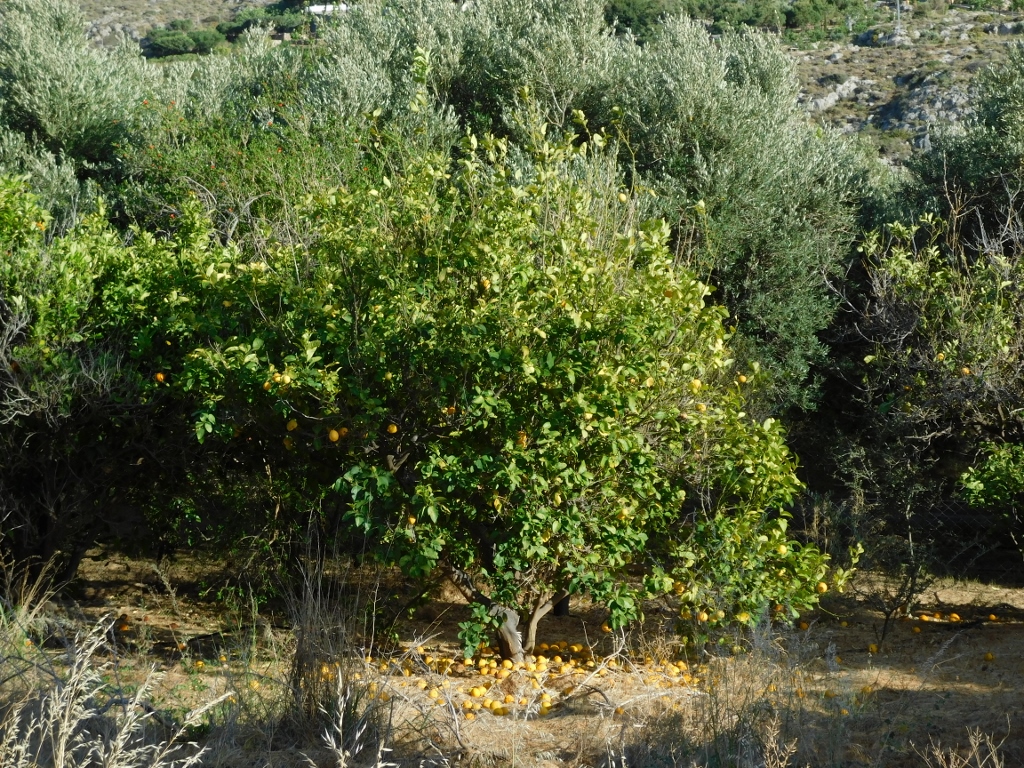 Tree with surplus lemons
Tree with surplus lemons
The road also leads past the very significant archaeological site of Zakros, which was closed on this occasion. You can read about my visit to the site: https://svudapodji.com/en/crete-19/.
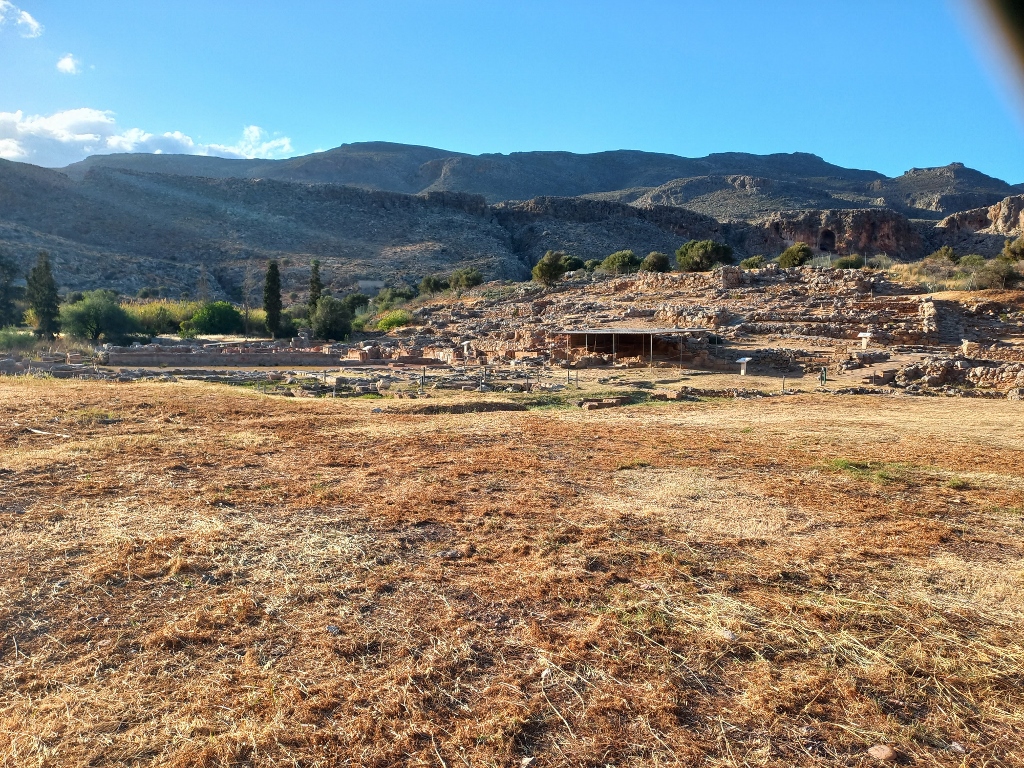 Archaeological site of Zakros
Archaeological site of Zakros
We soon arrived at the Kato Zakros beach, where the other members of the group were waiting for us at one of the numerous restaurants here. I found it interesting to take a look at the beach itself, which at this time of the year and day was completely deserted.
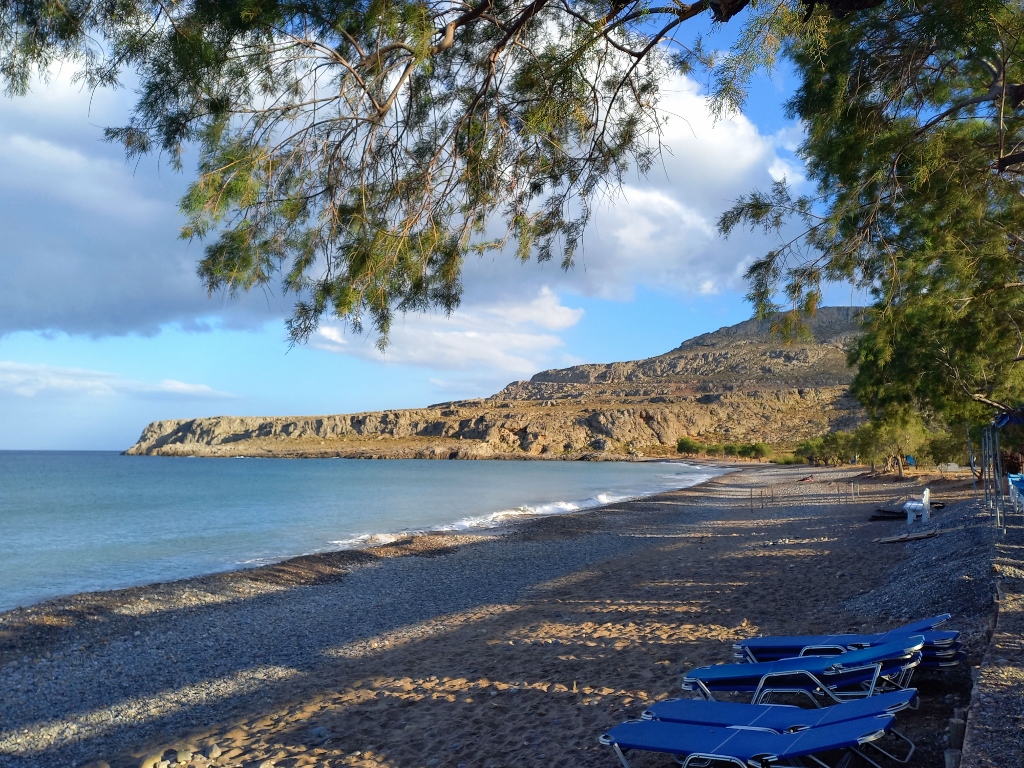 Kato Zakros beach
Kato Zakros beach
After a bit of rest, we still had to get moving because Saša drove Marko and me back to the village of Ano Zakros where our cars were parked. Then, we all returned to Kato Zakros to pick up the other members of the group and, afterwards, we agreed to go back to Malia at our own pace because some wanted to have dinner. Sonja, Beba and Jelena, who were riding with me, didn’t have such plans, so we set off. Along the way, I reminisced about the experience from two years ago, driving the same route, and it warmed my heart.
And here is where I stayed during this trip to Crete:
In the end, we were also treated to a gift from the heavens in the form of a miraculous sight created by the clouds and the sun setting somewhere in the west.
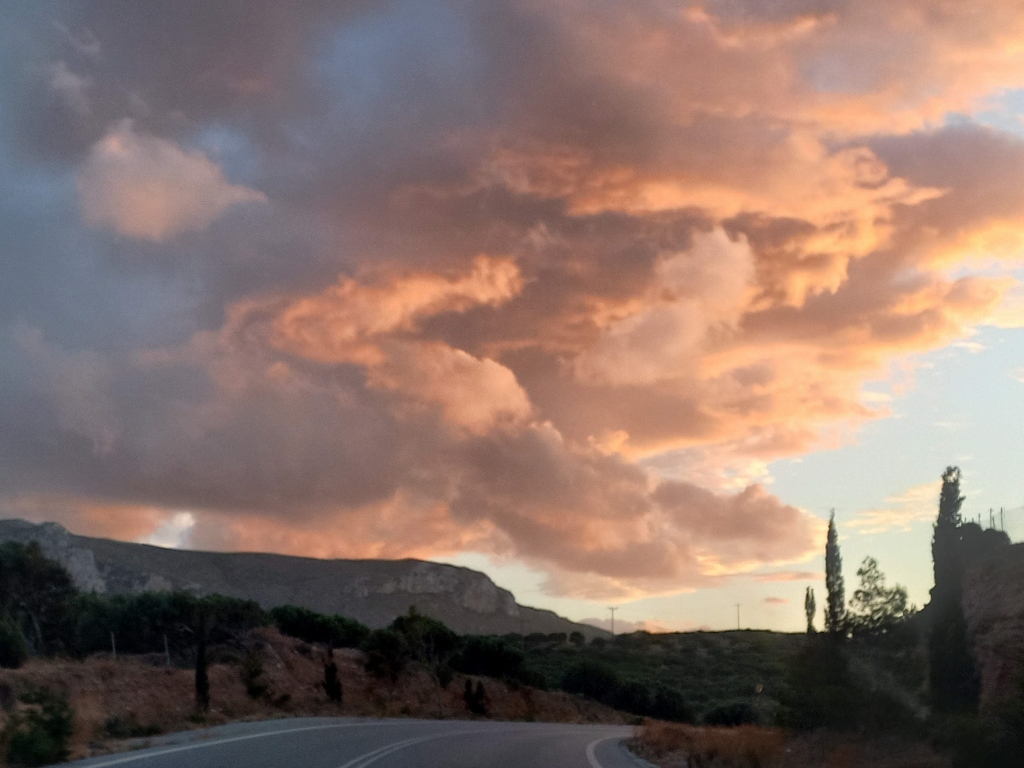 Sky above eastern Crete
Sky above eastern Crete